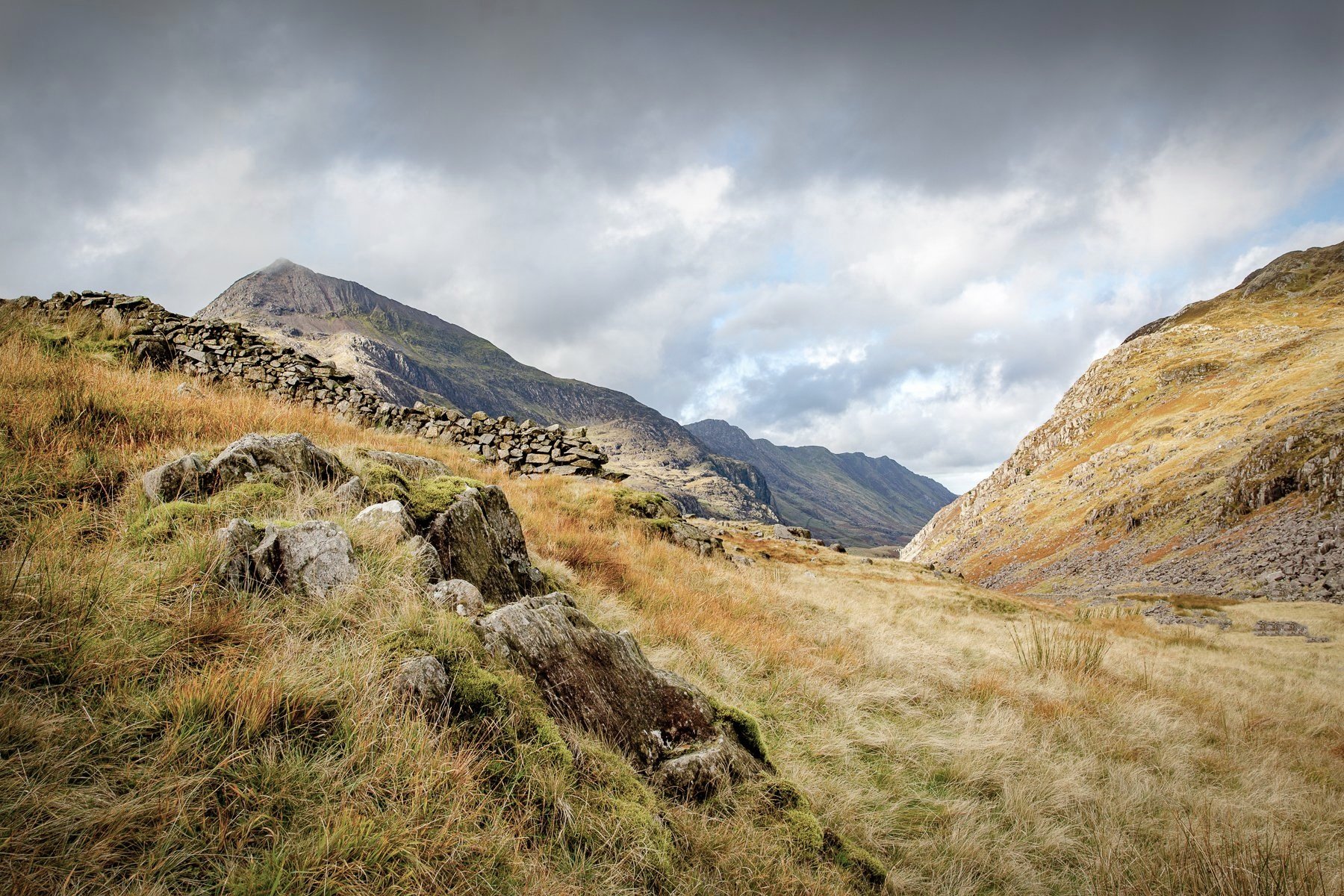

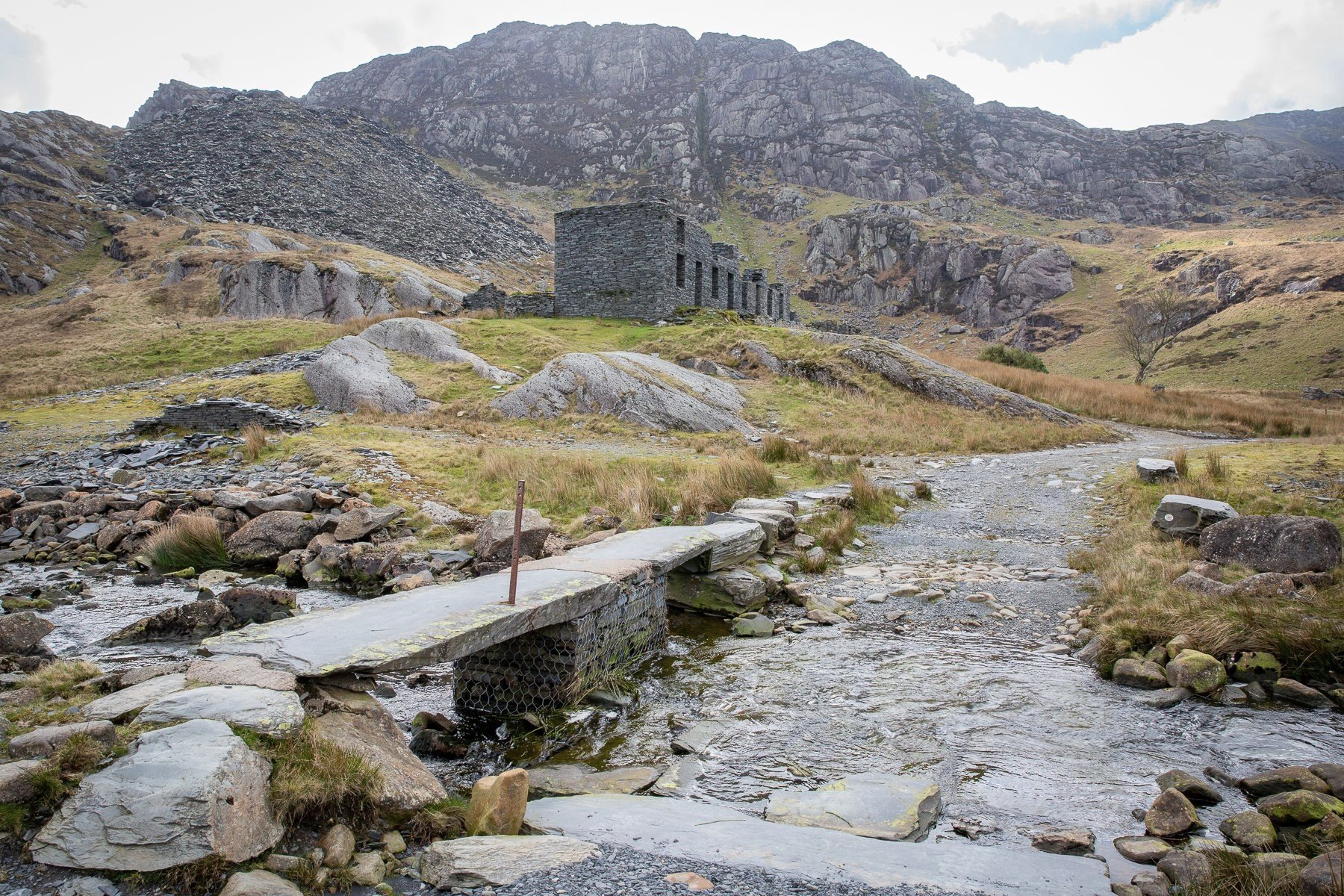

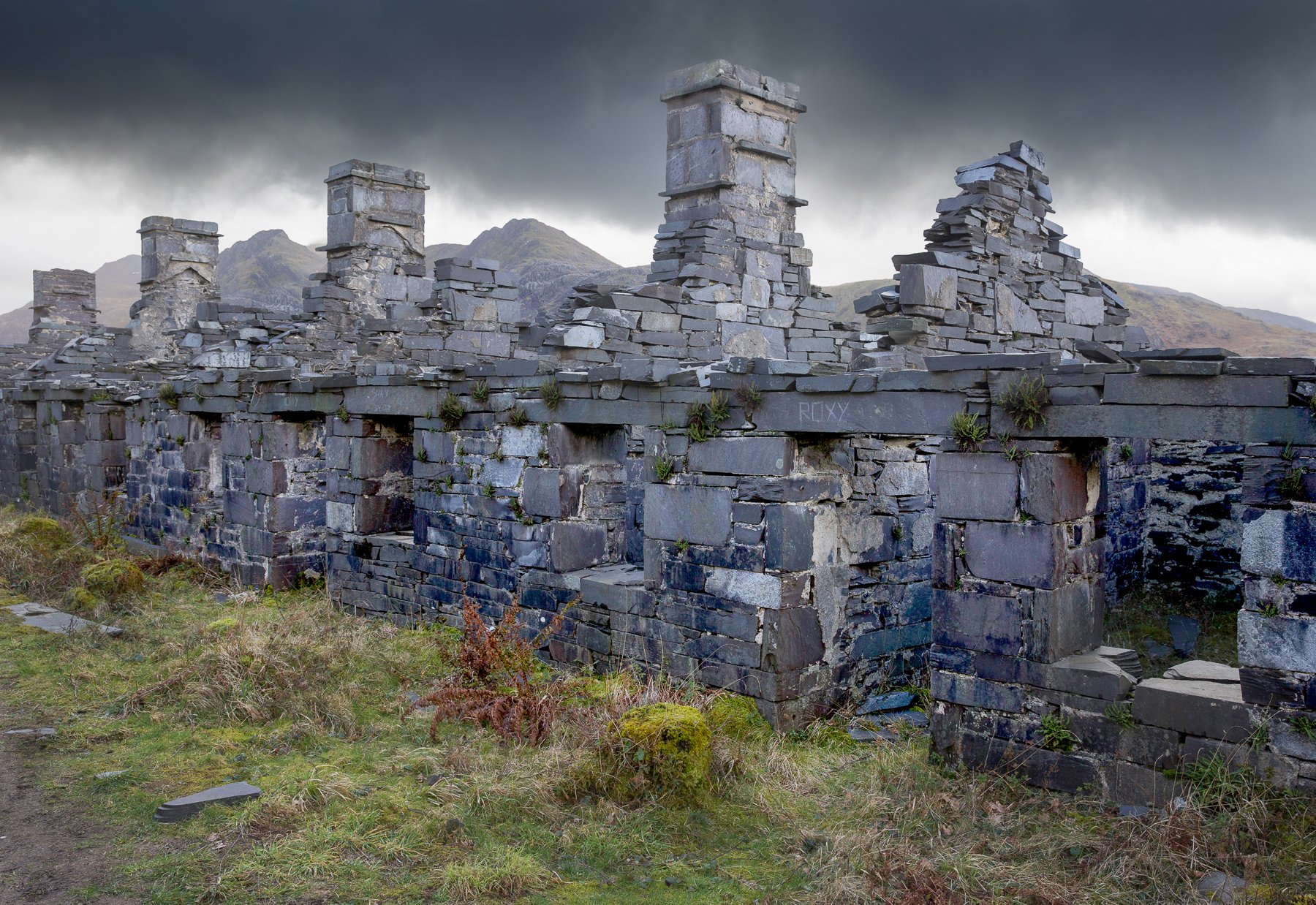
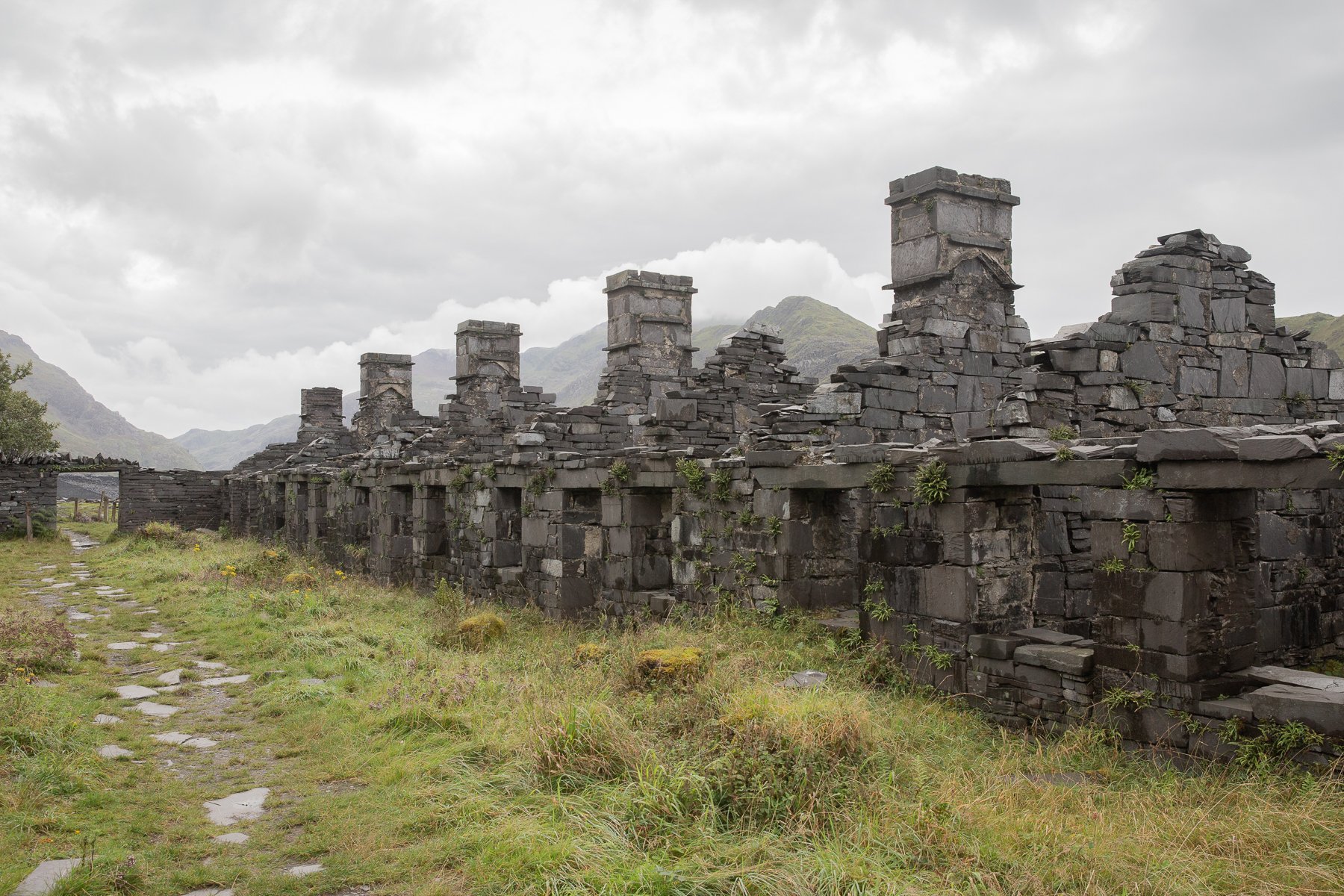
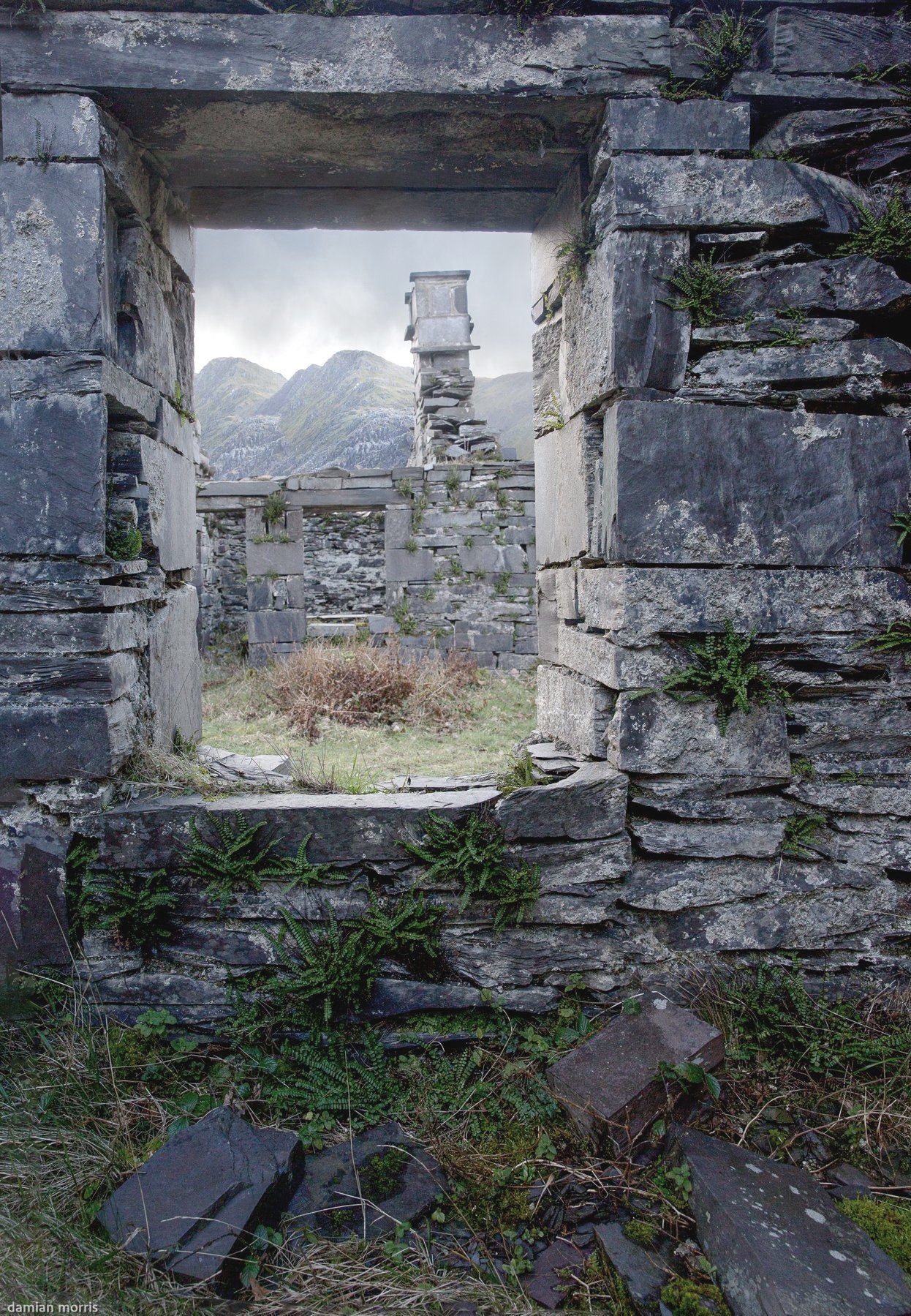
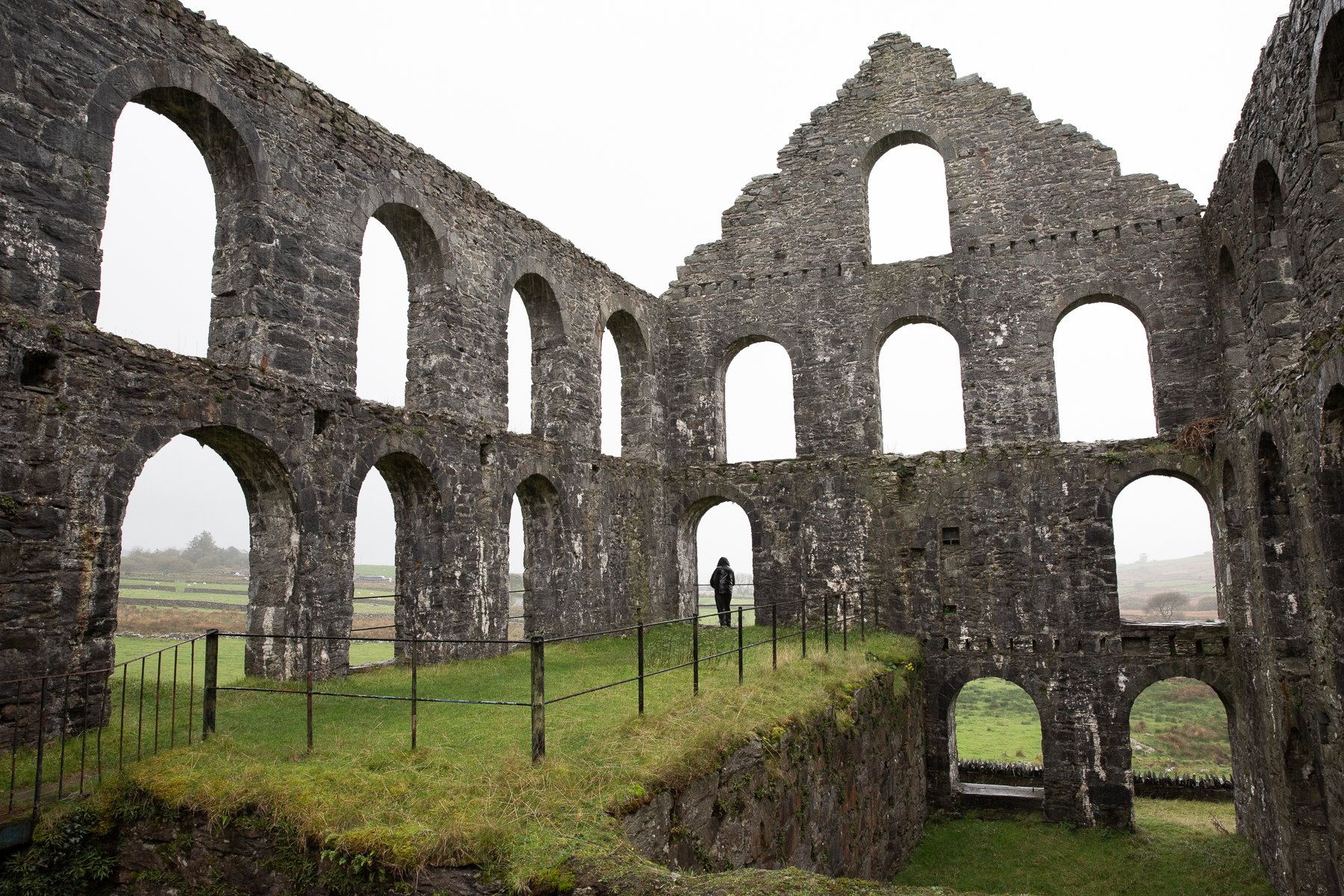
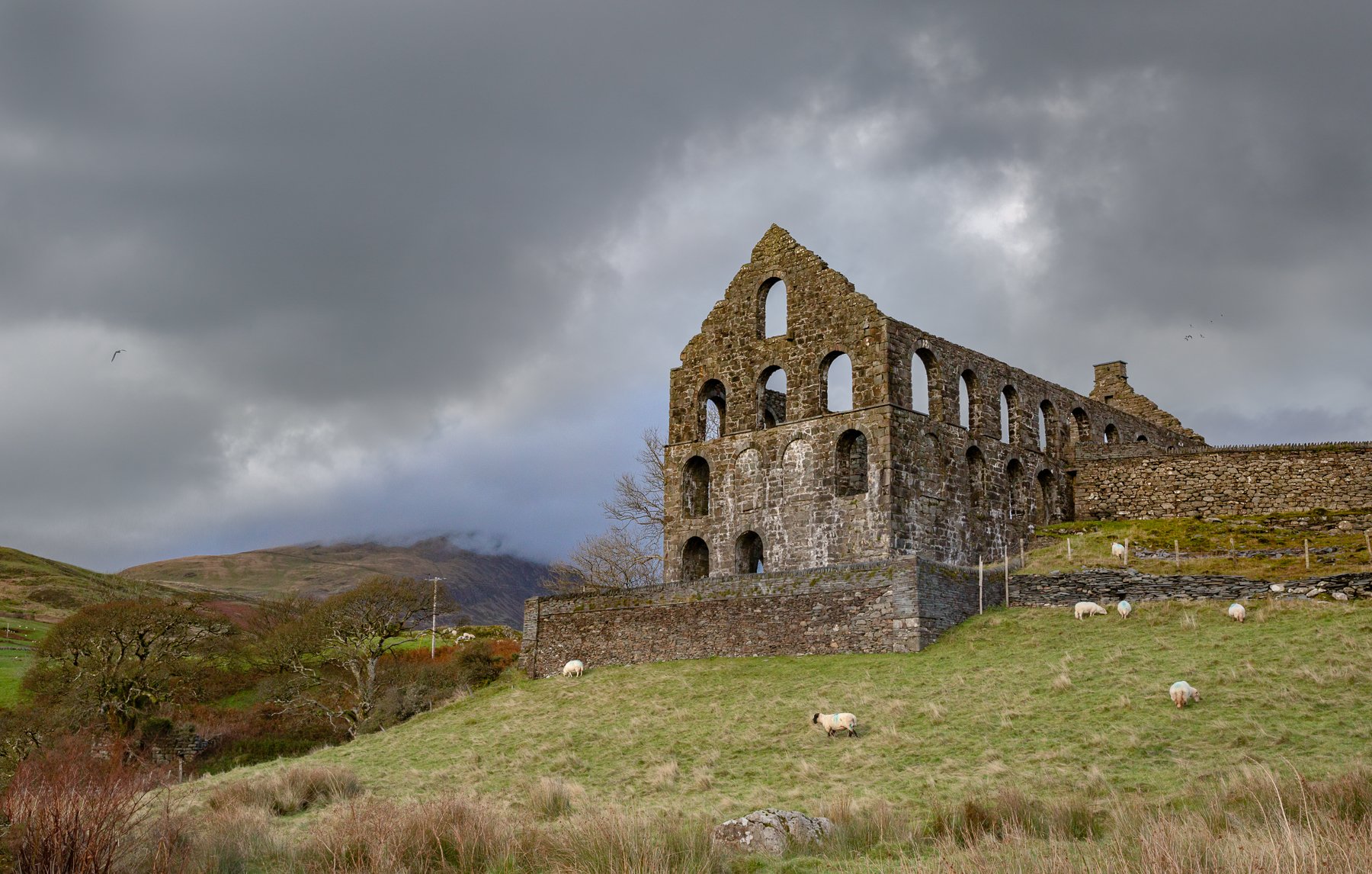




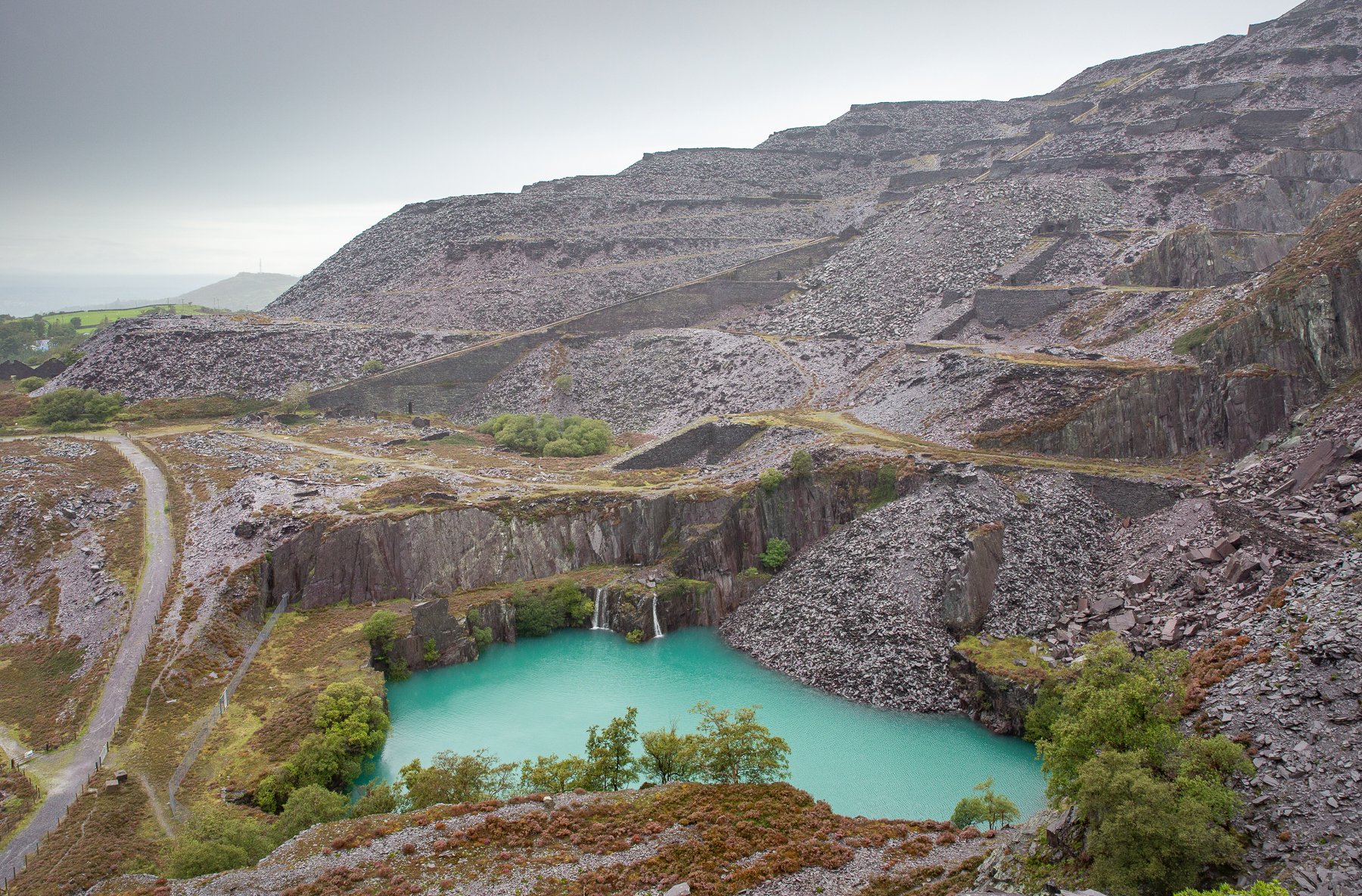
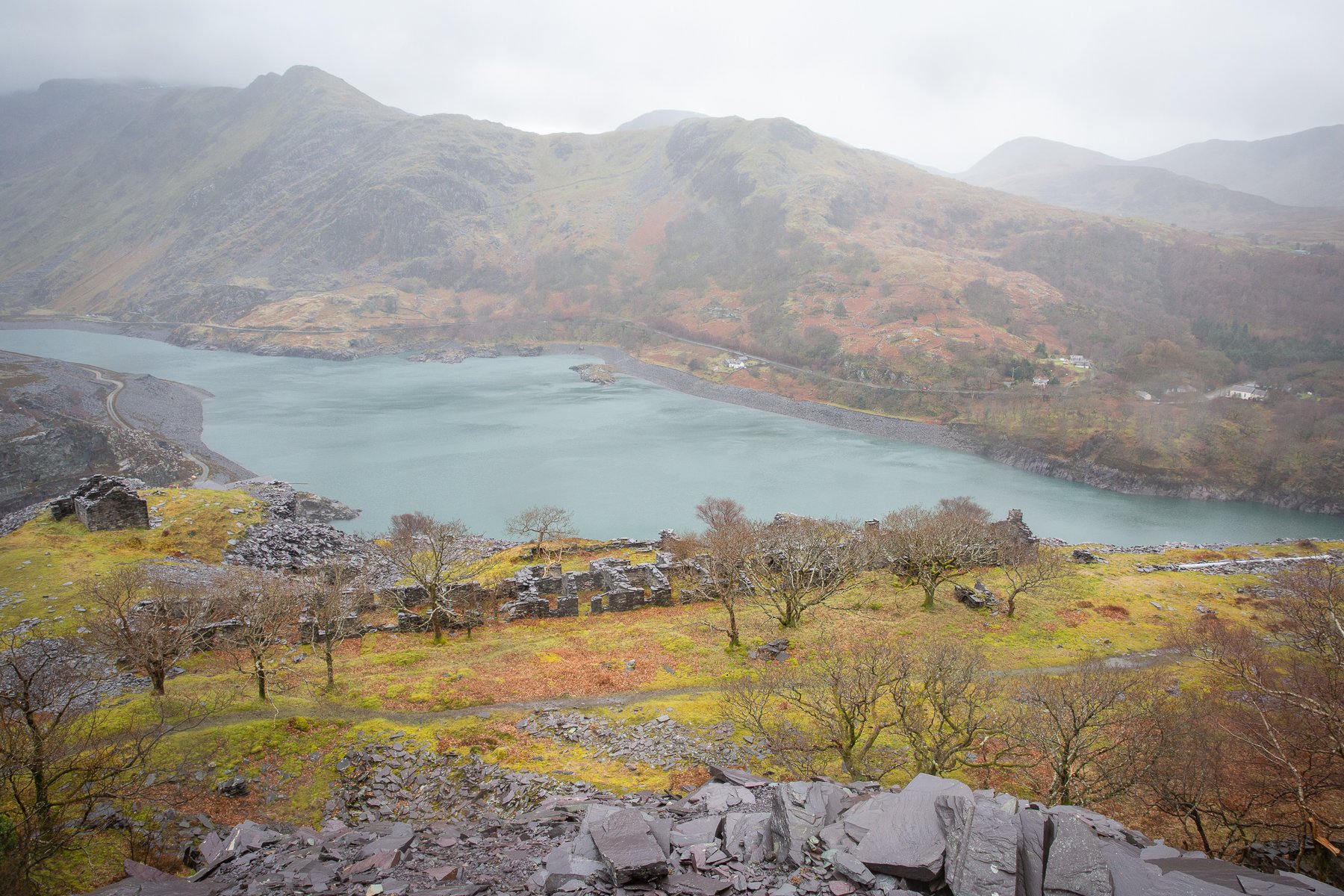




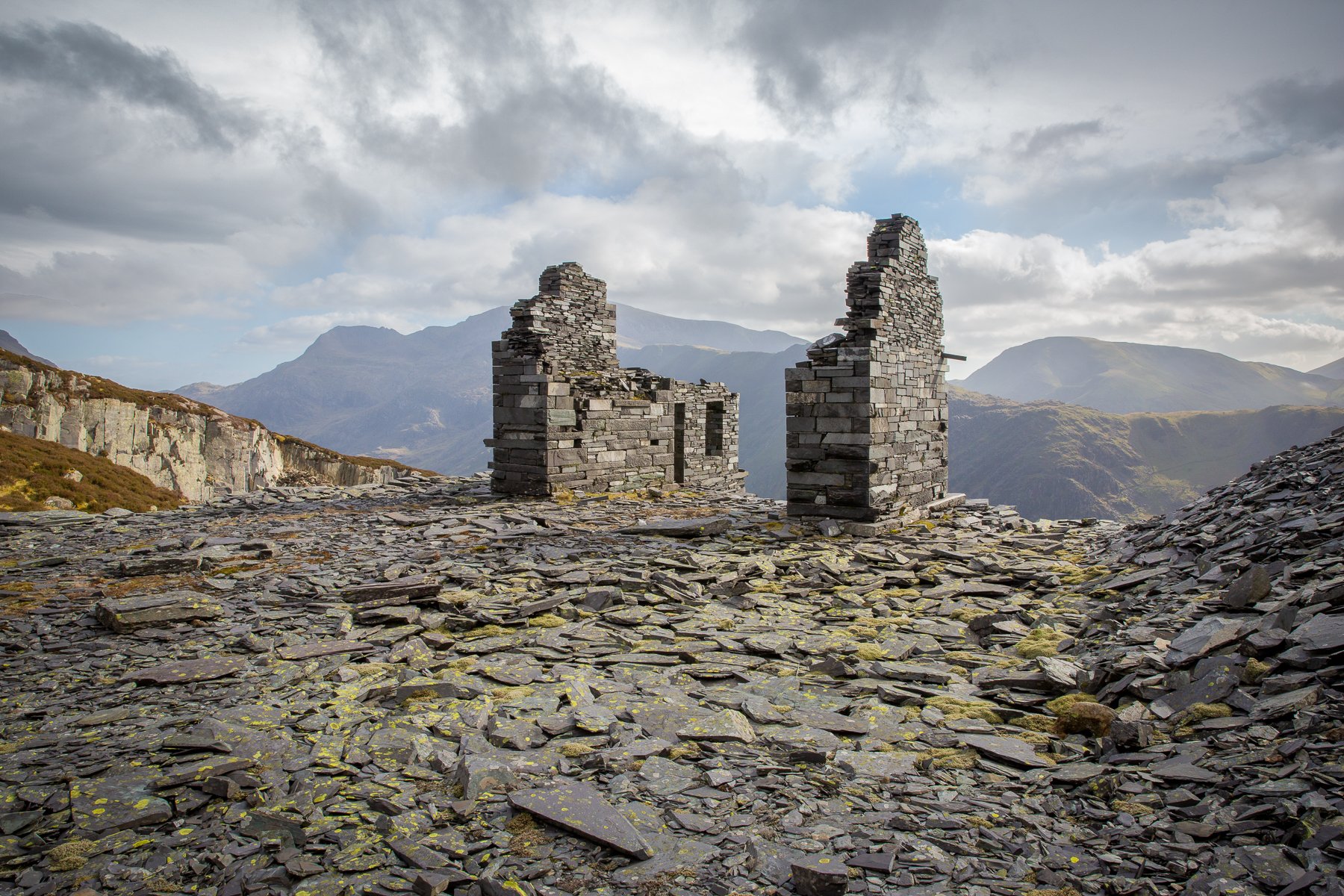

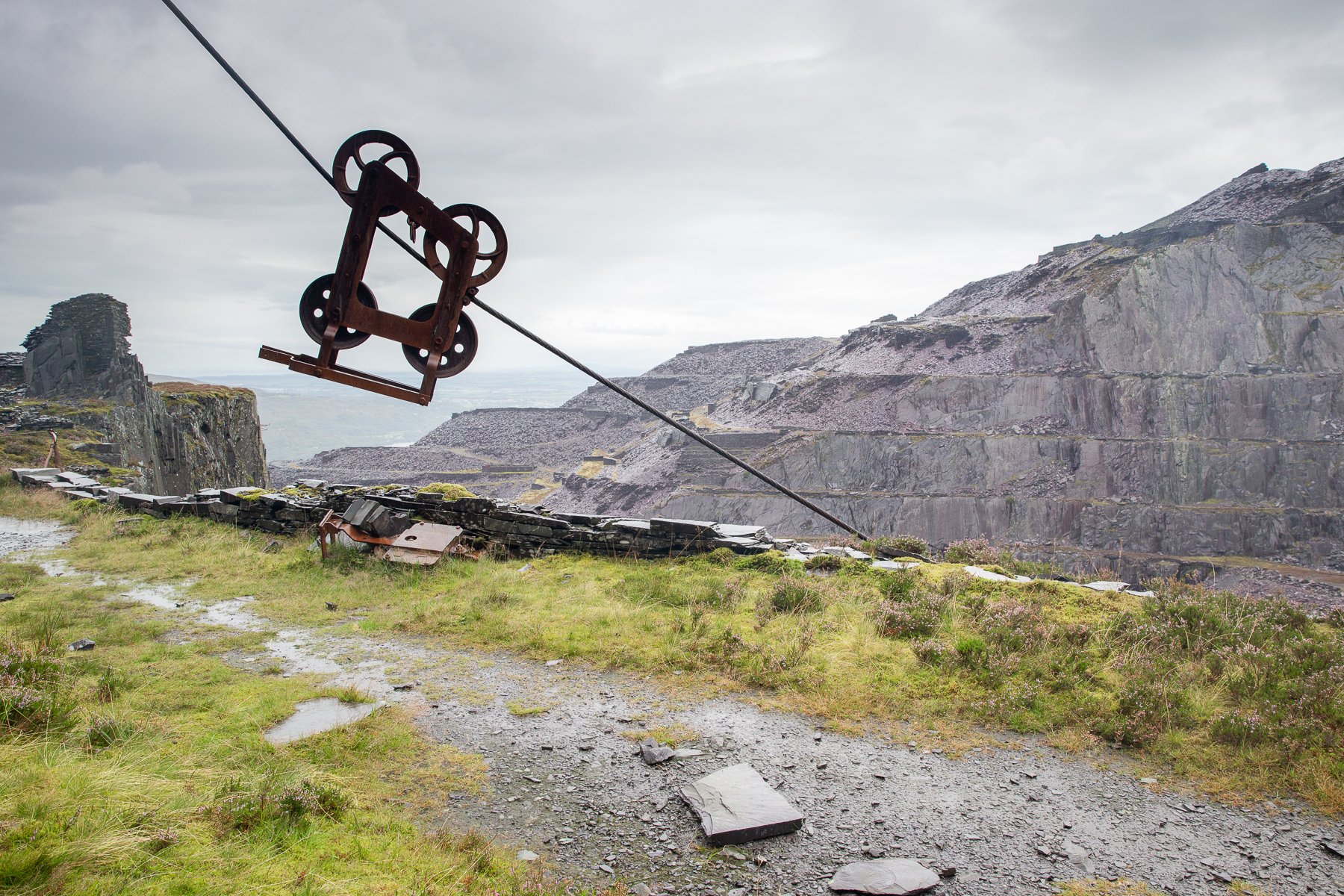

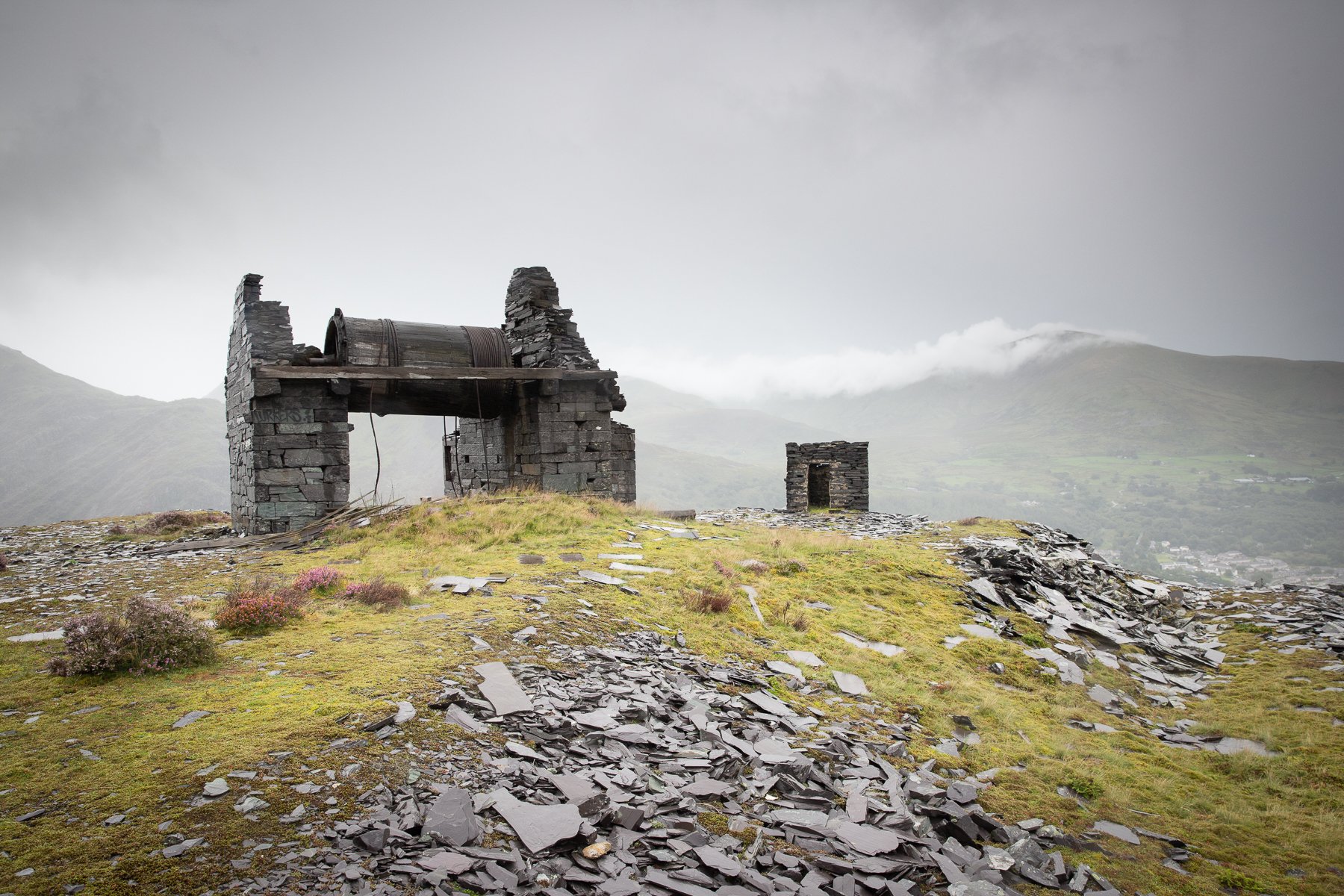

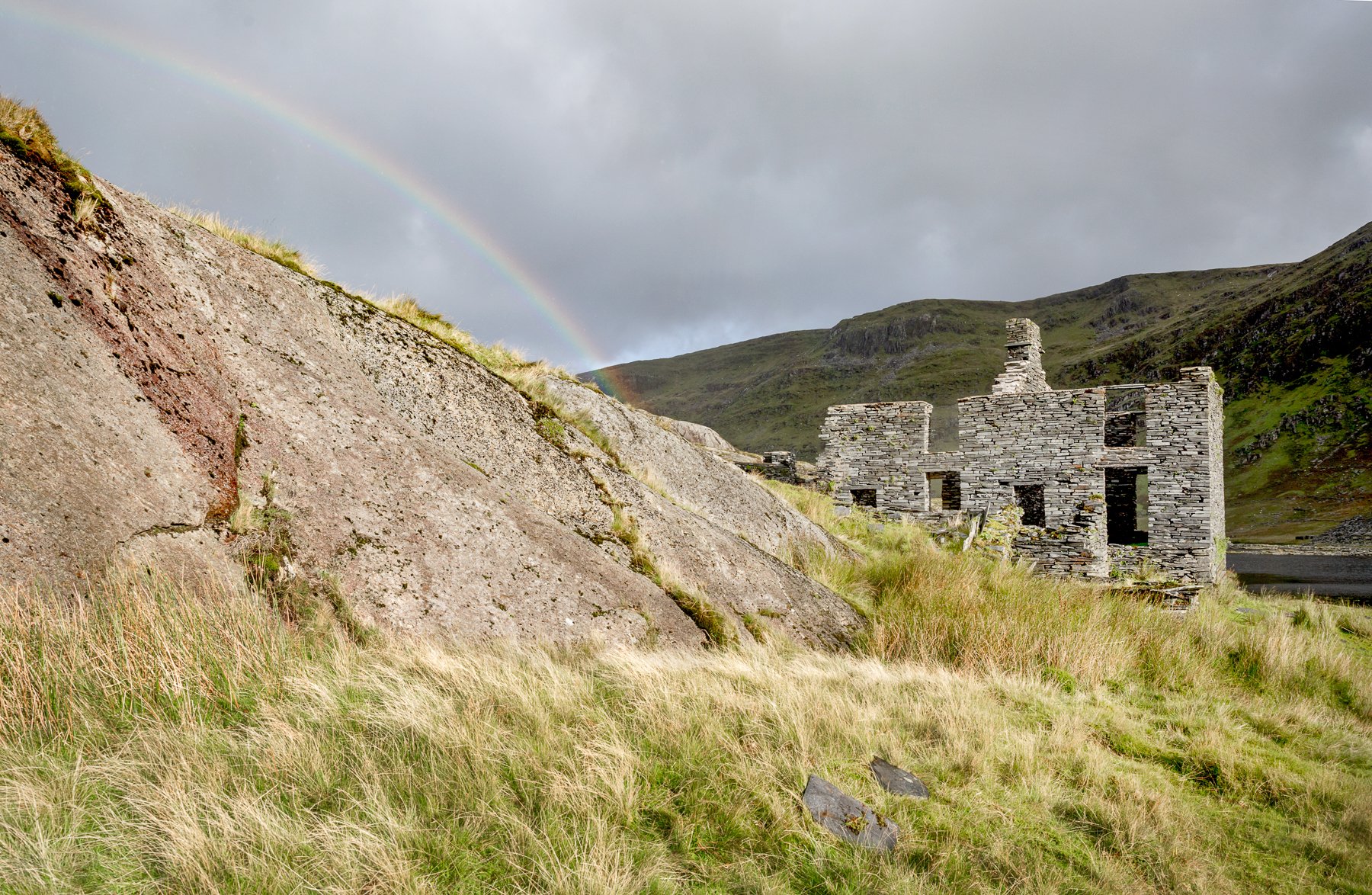
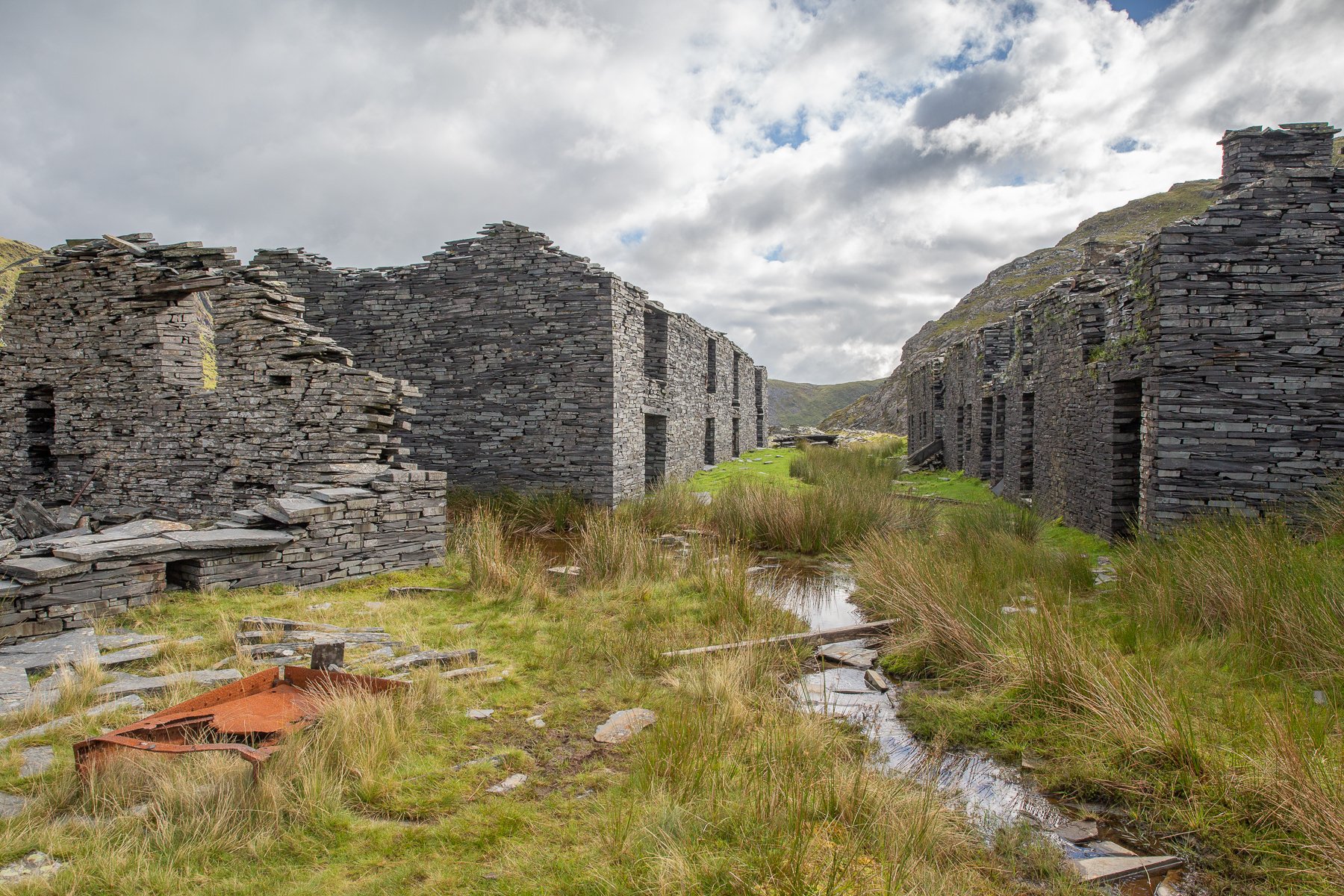

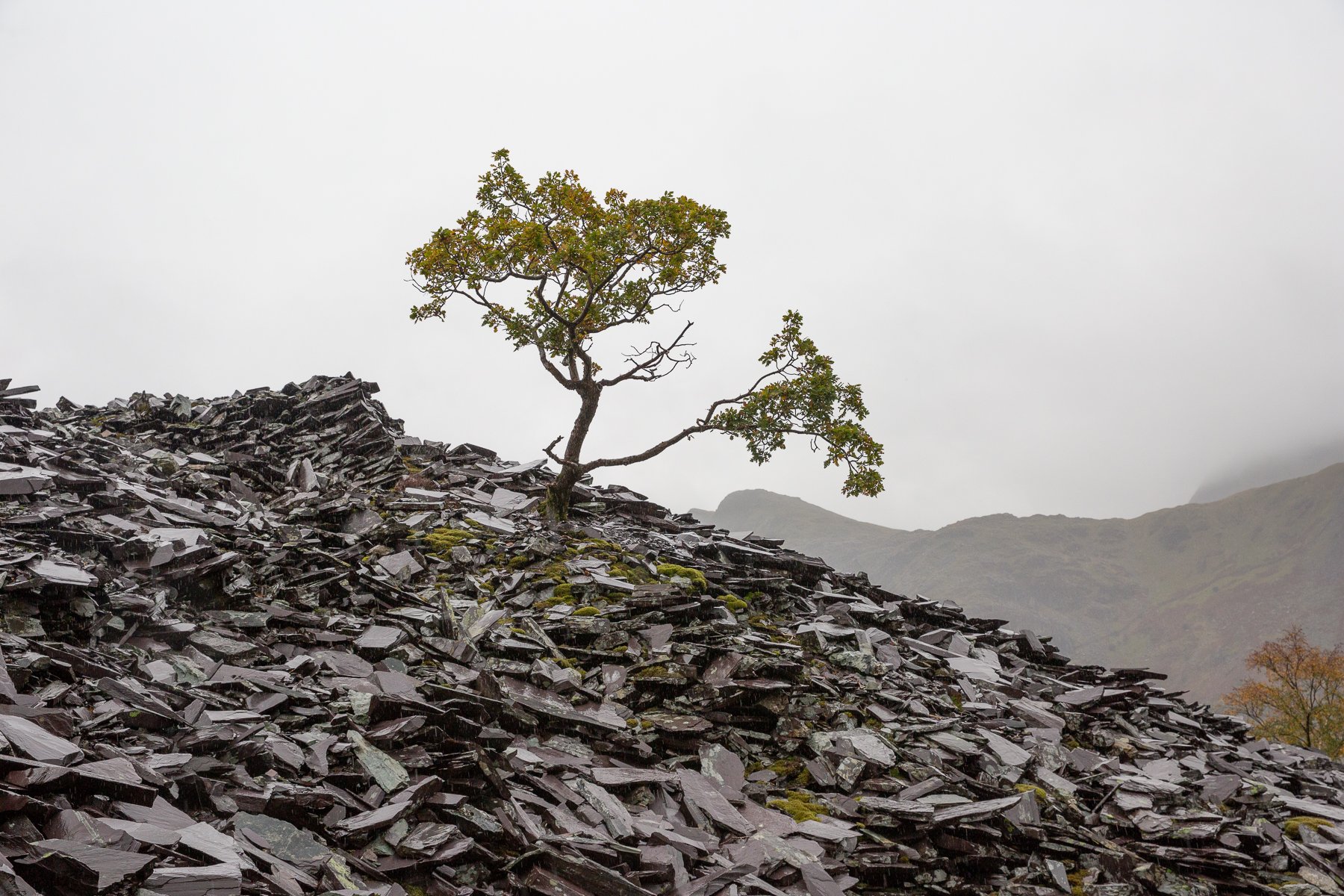
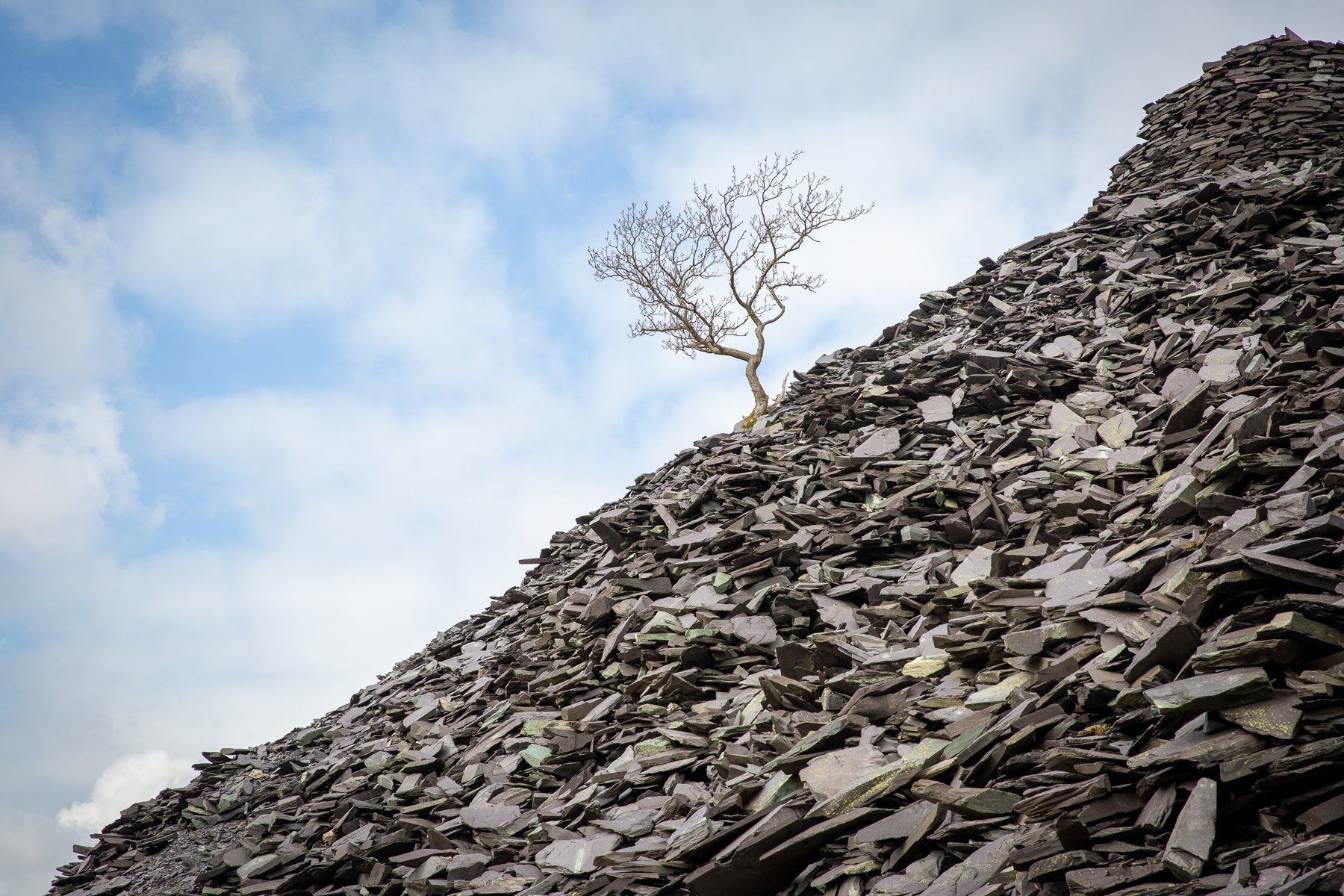
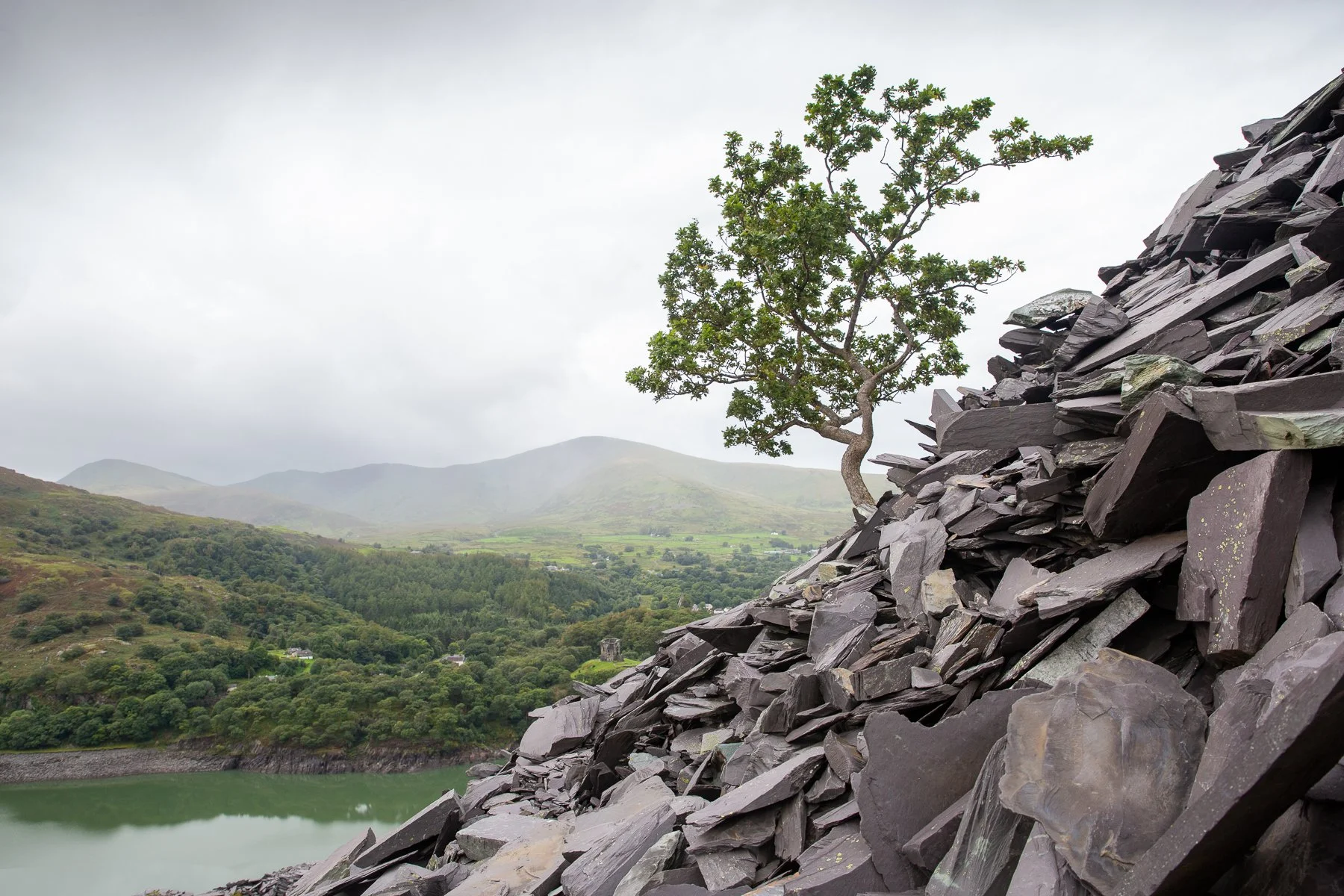
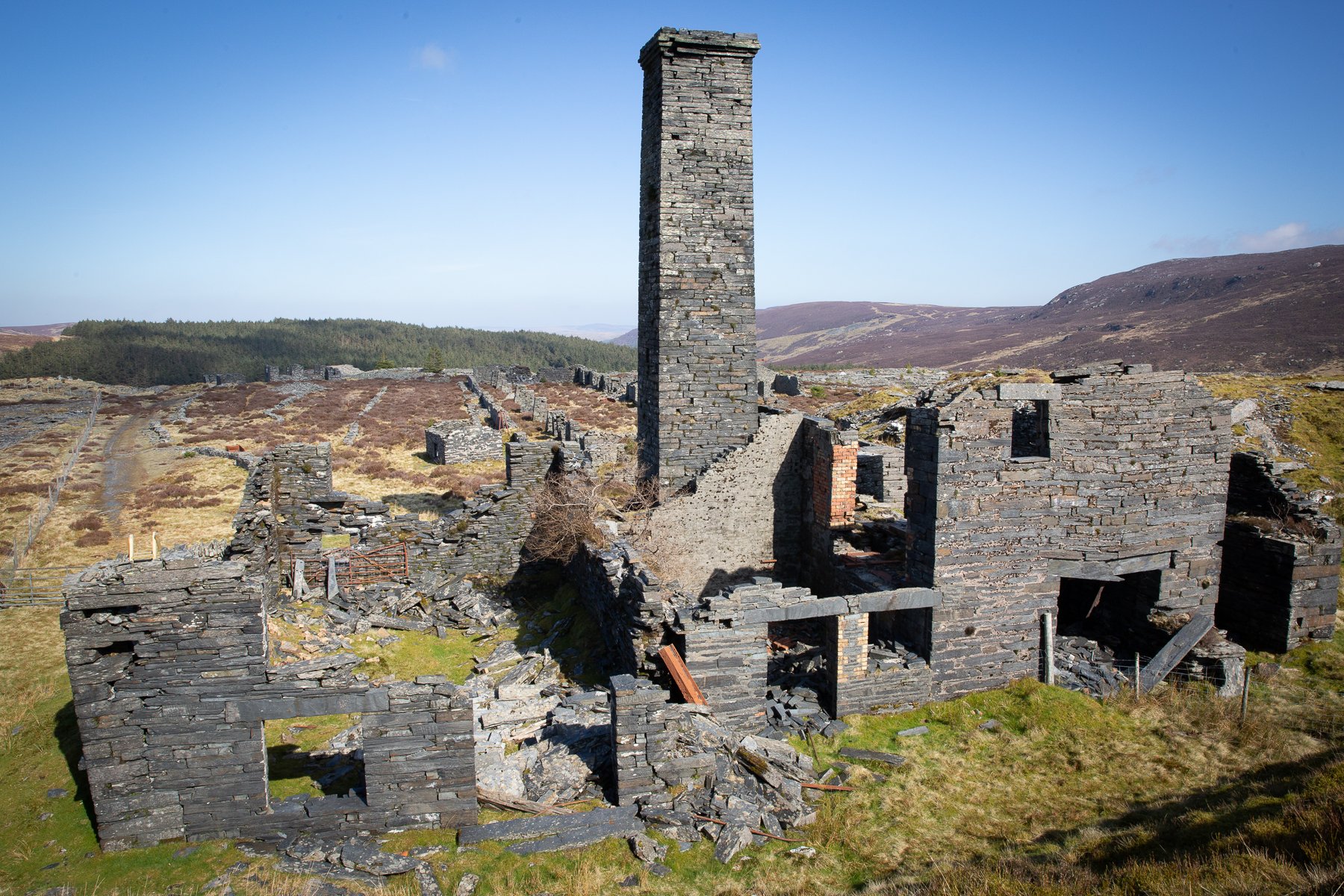

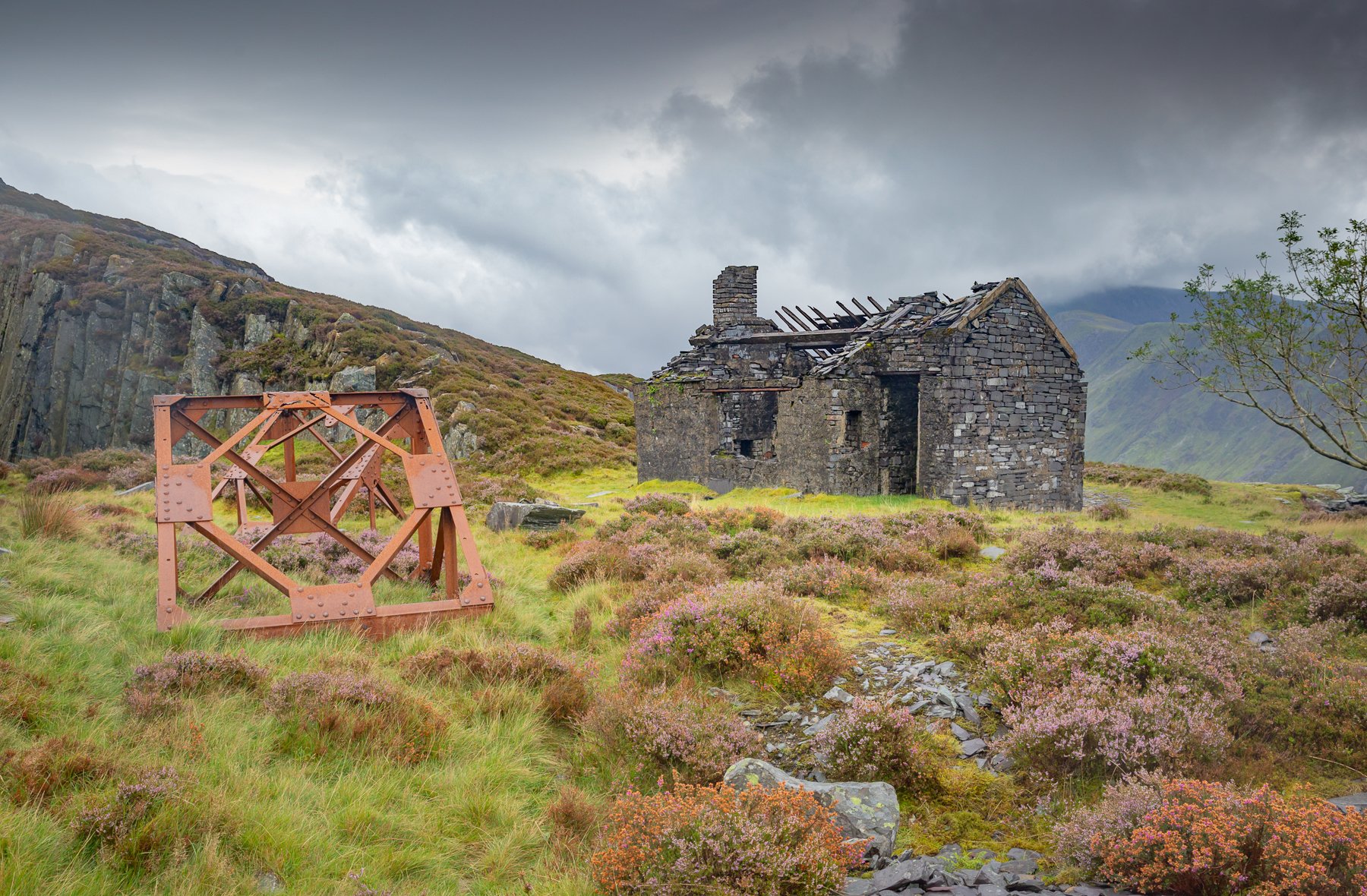
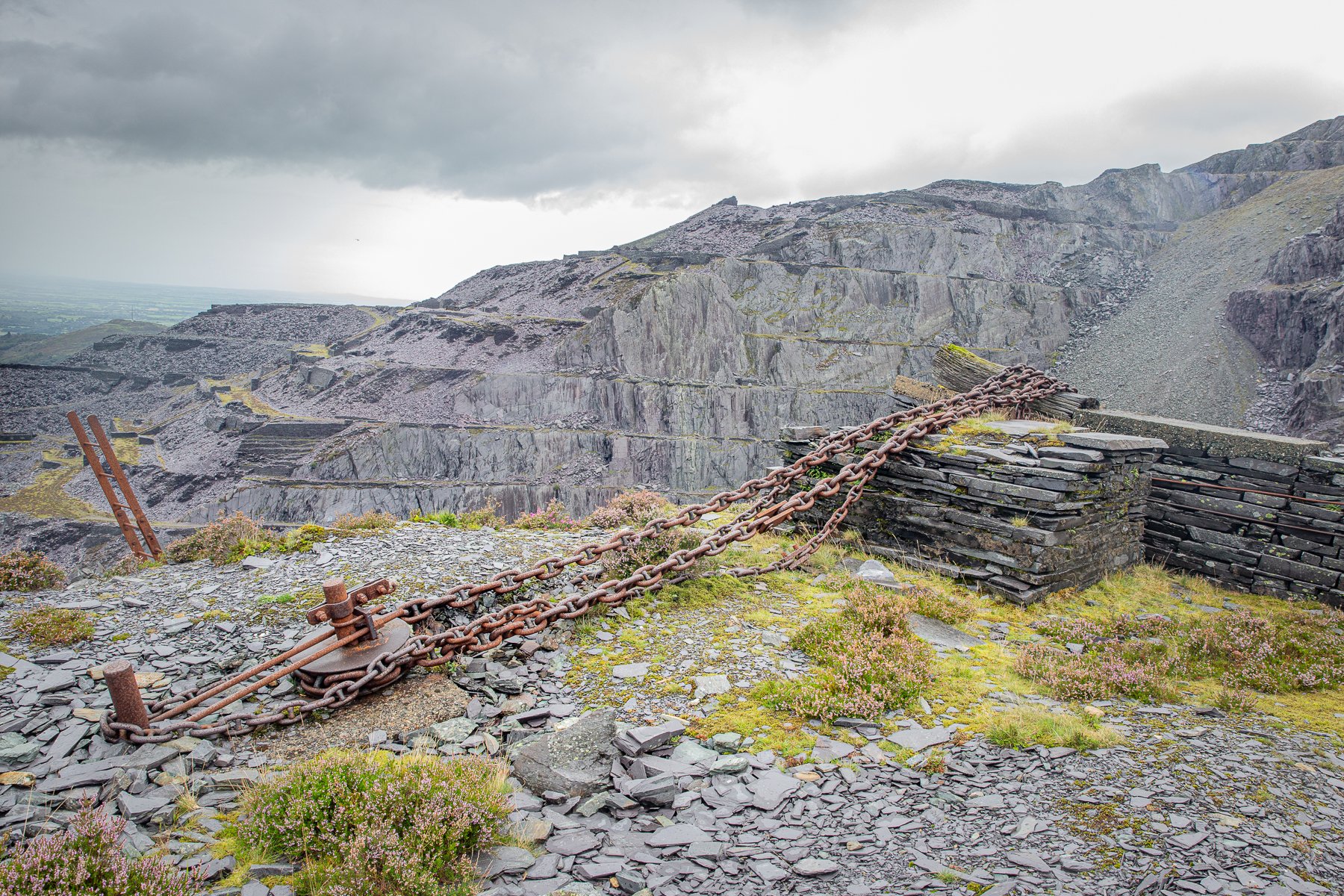
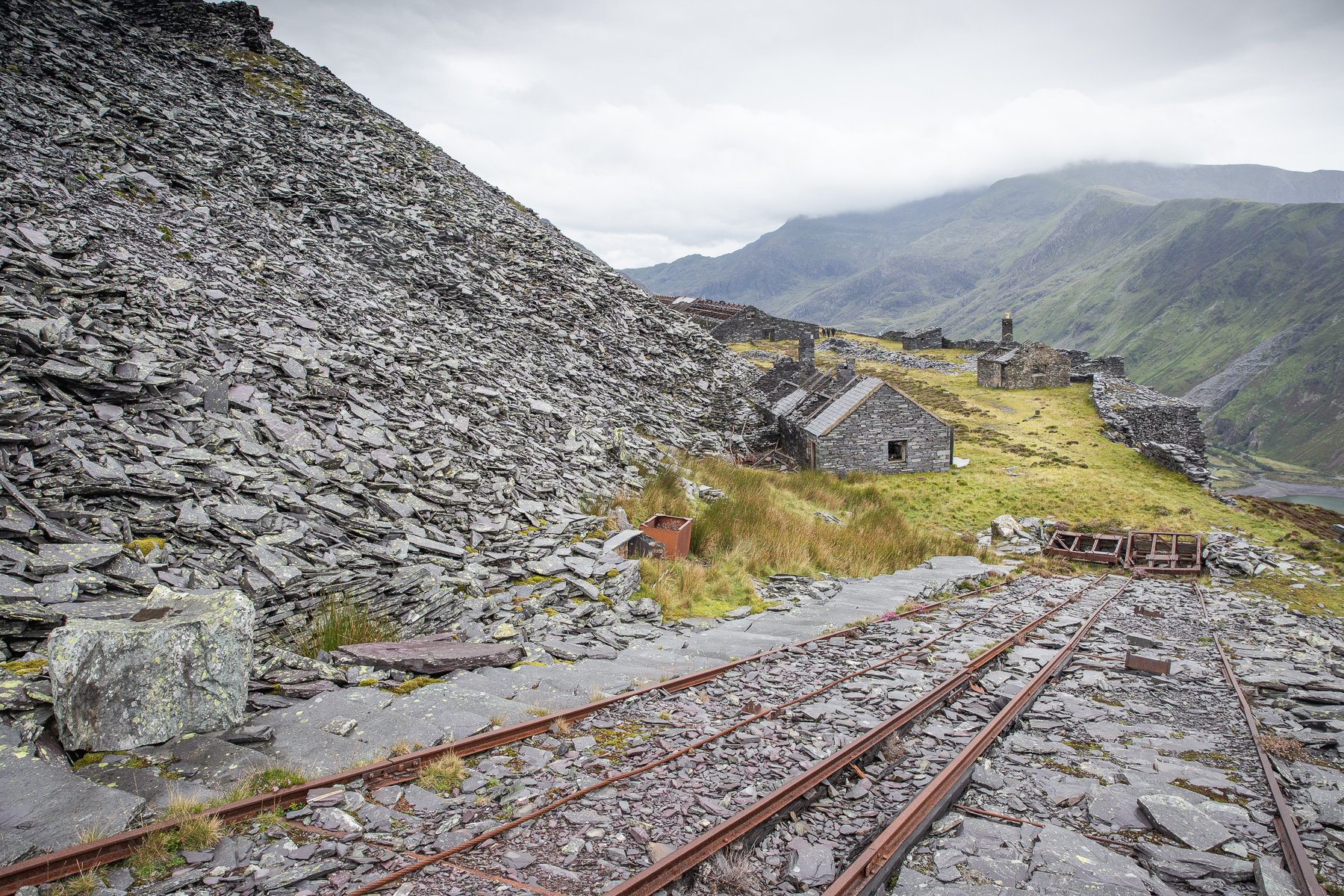

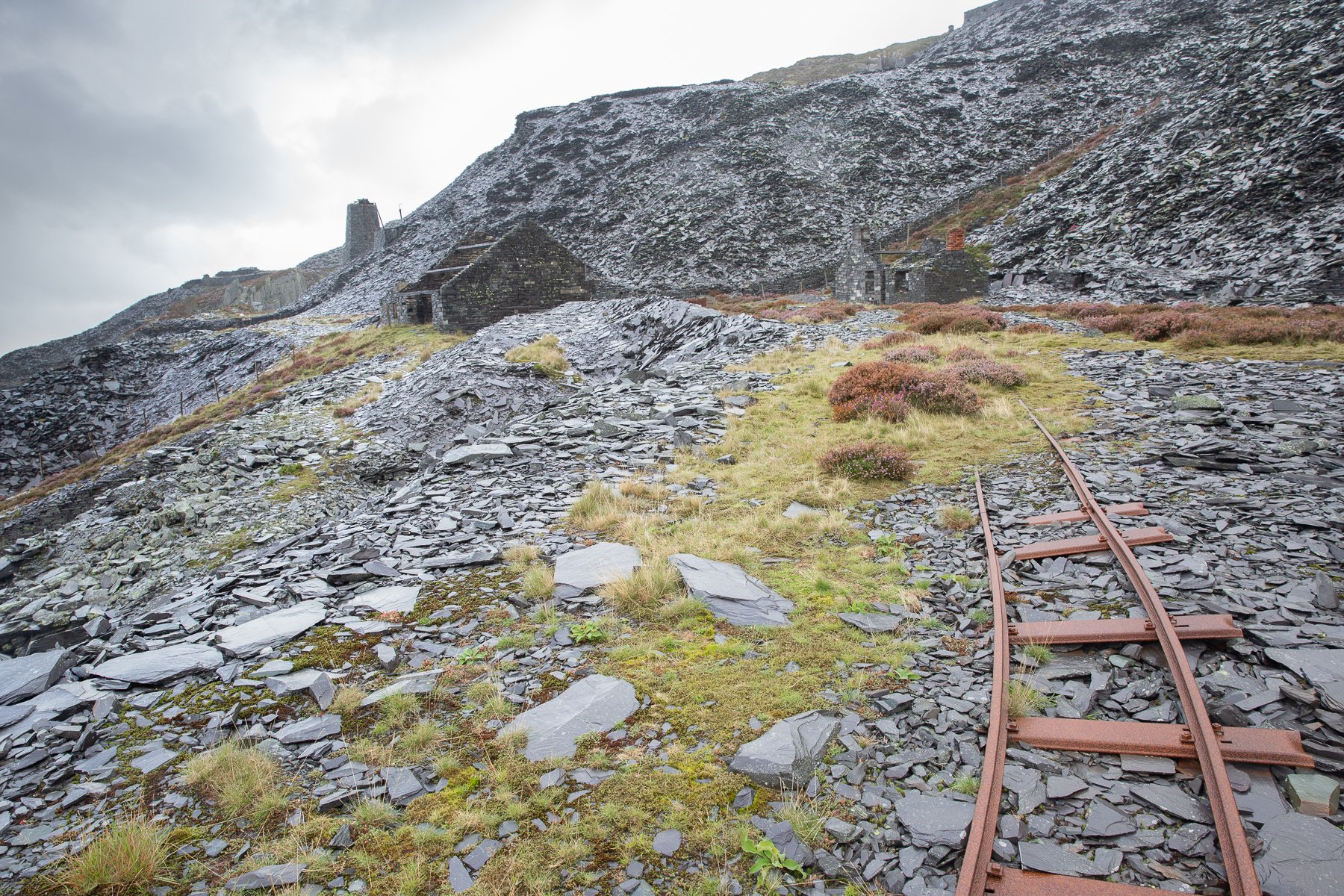

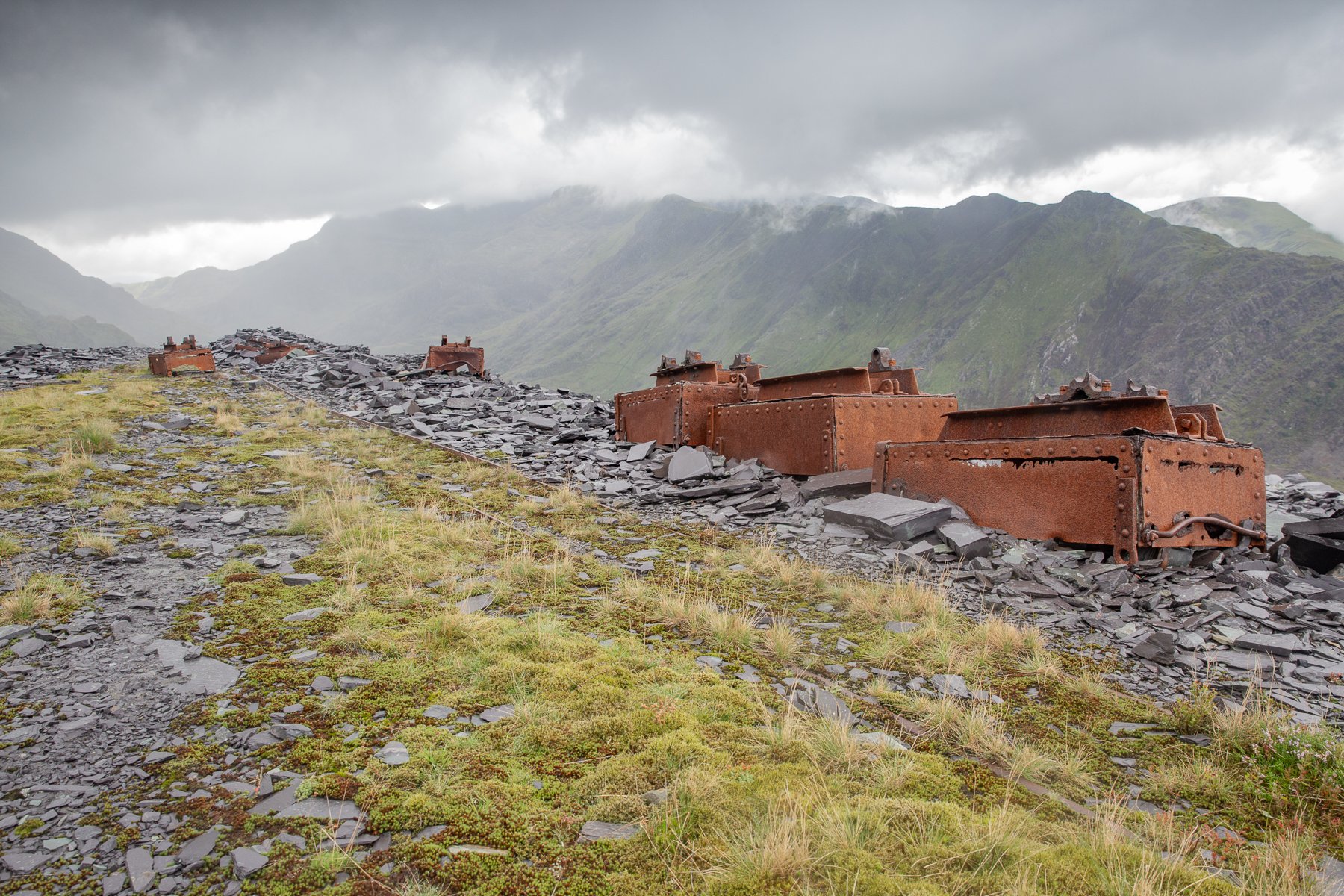
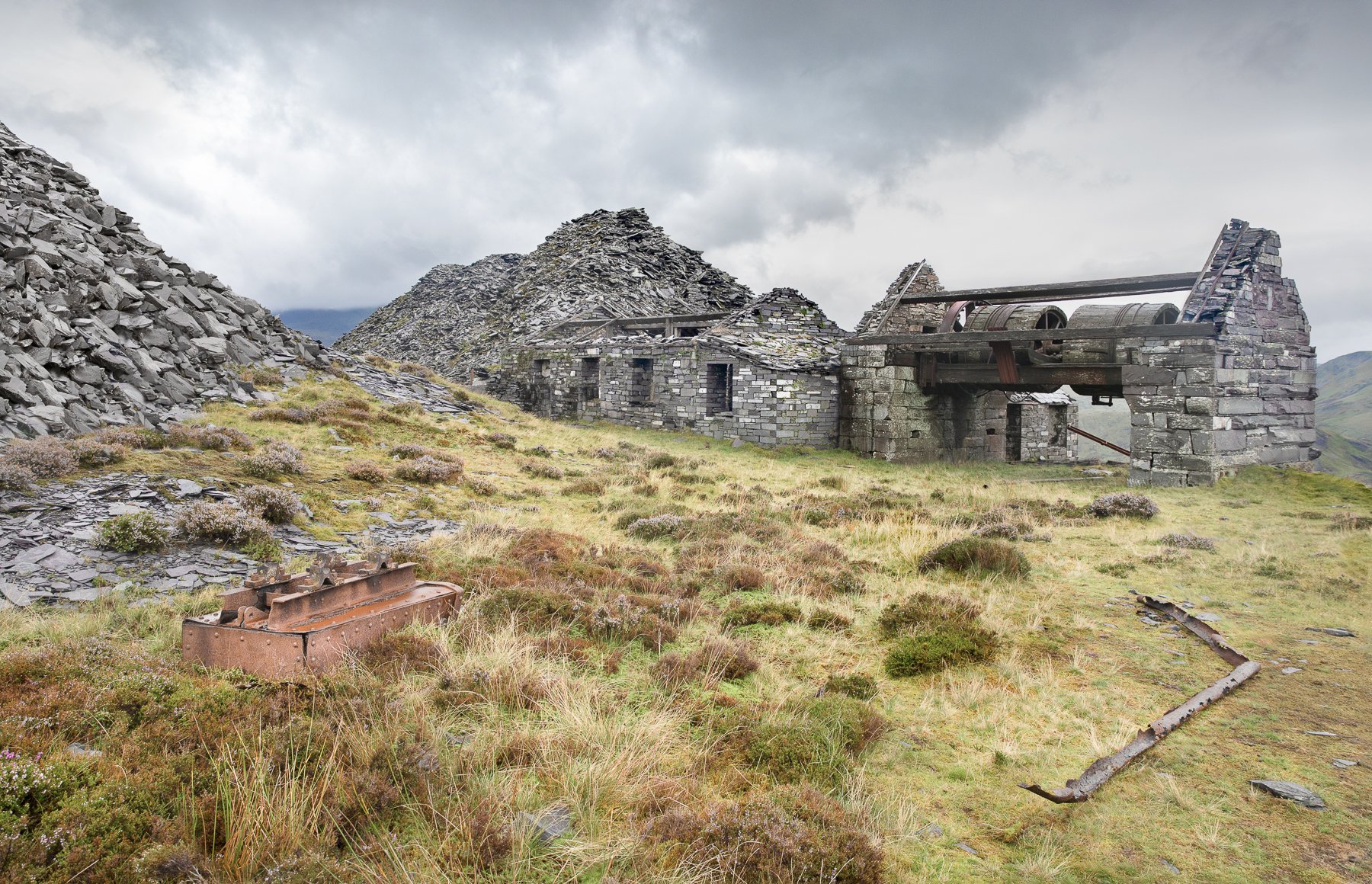
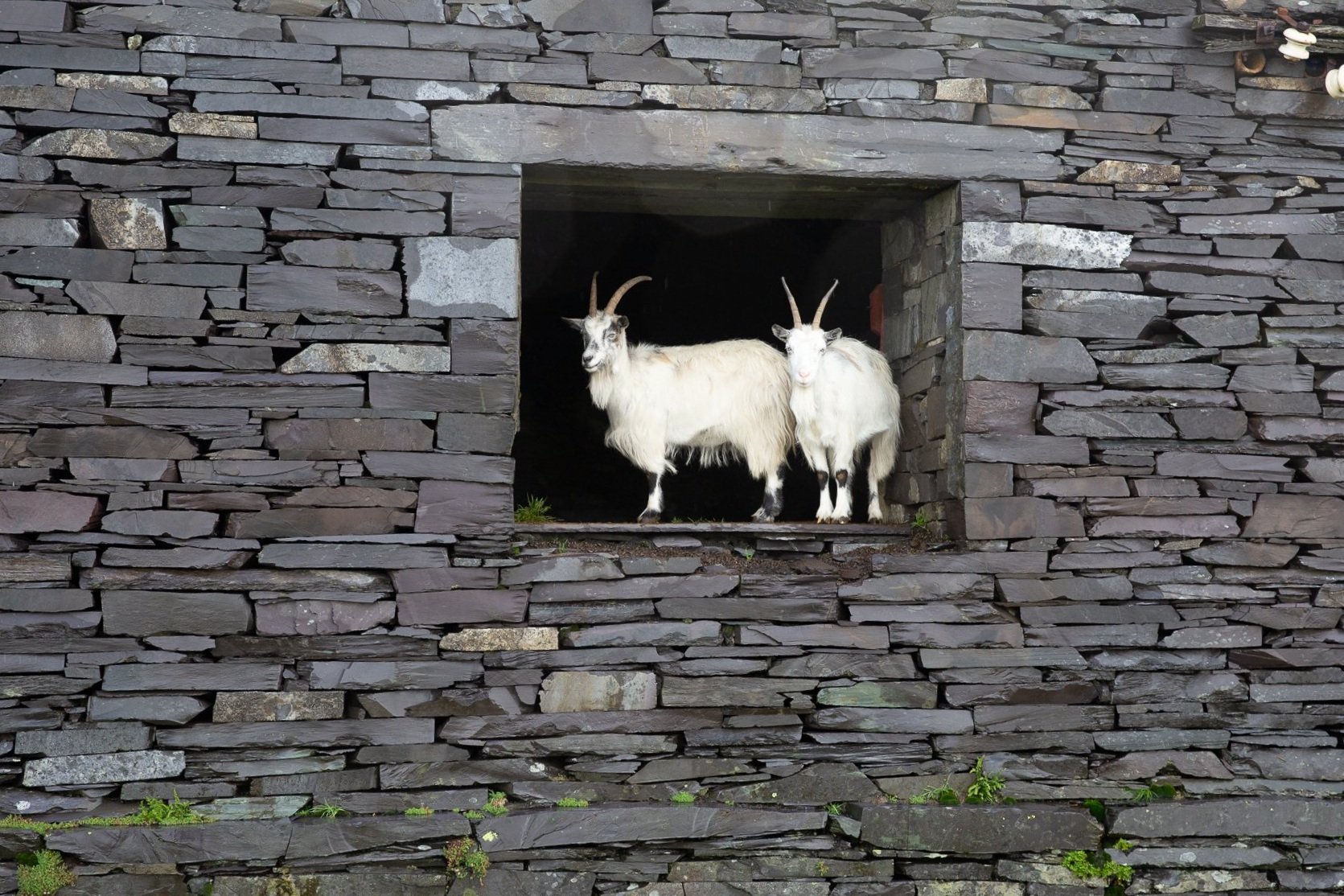
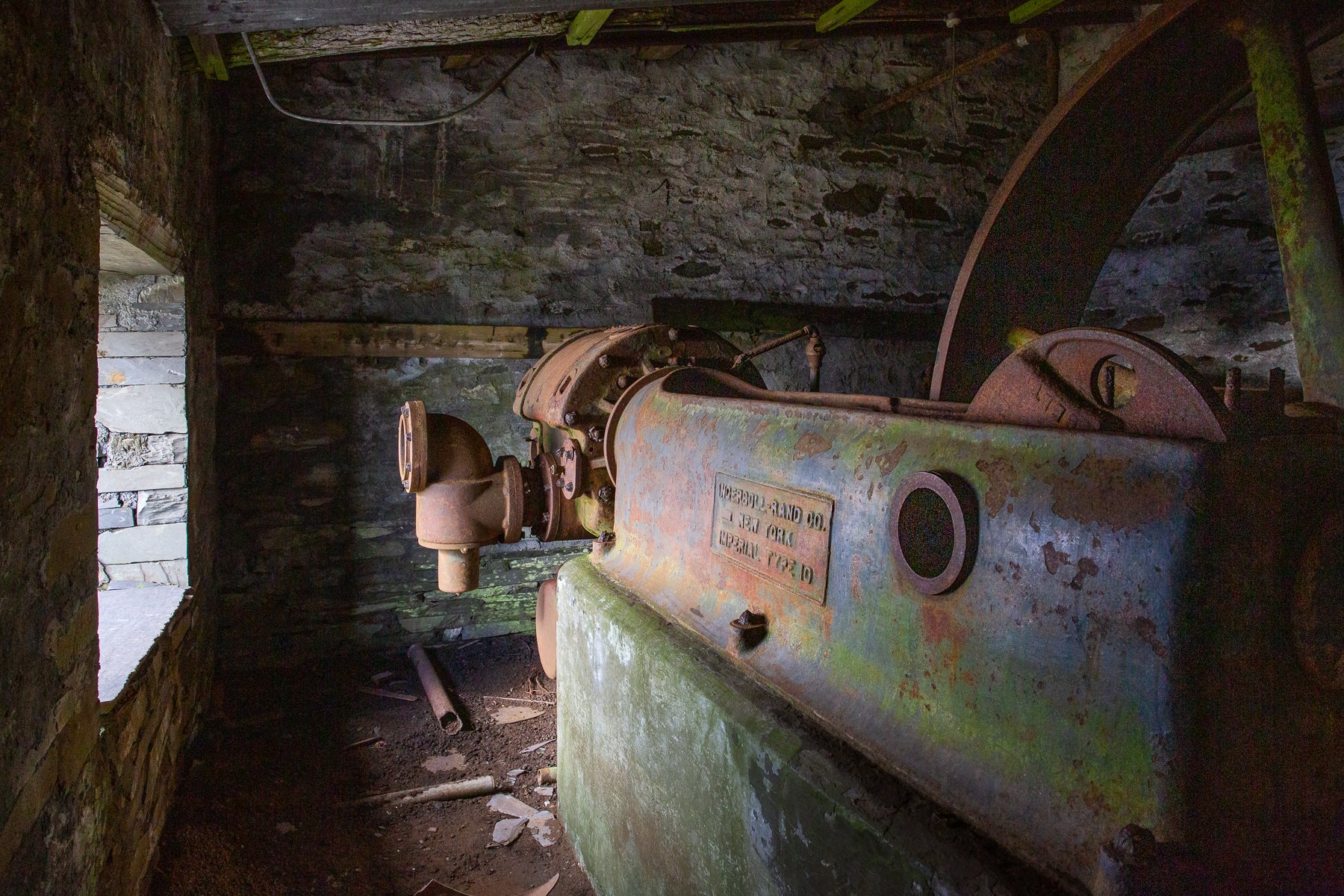
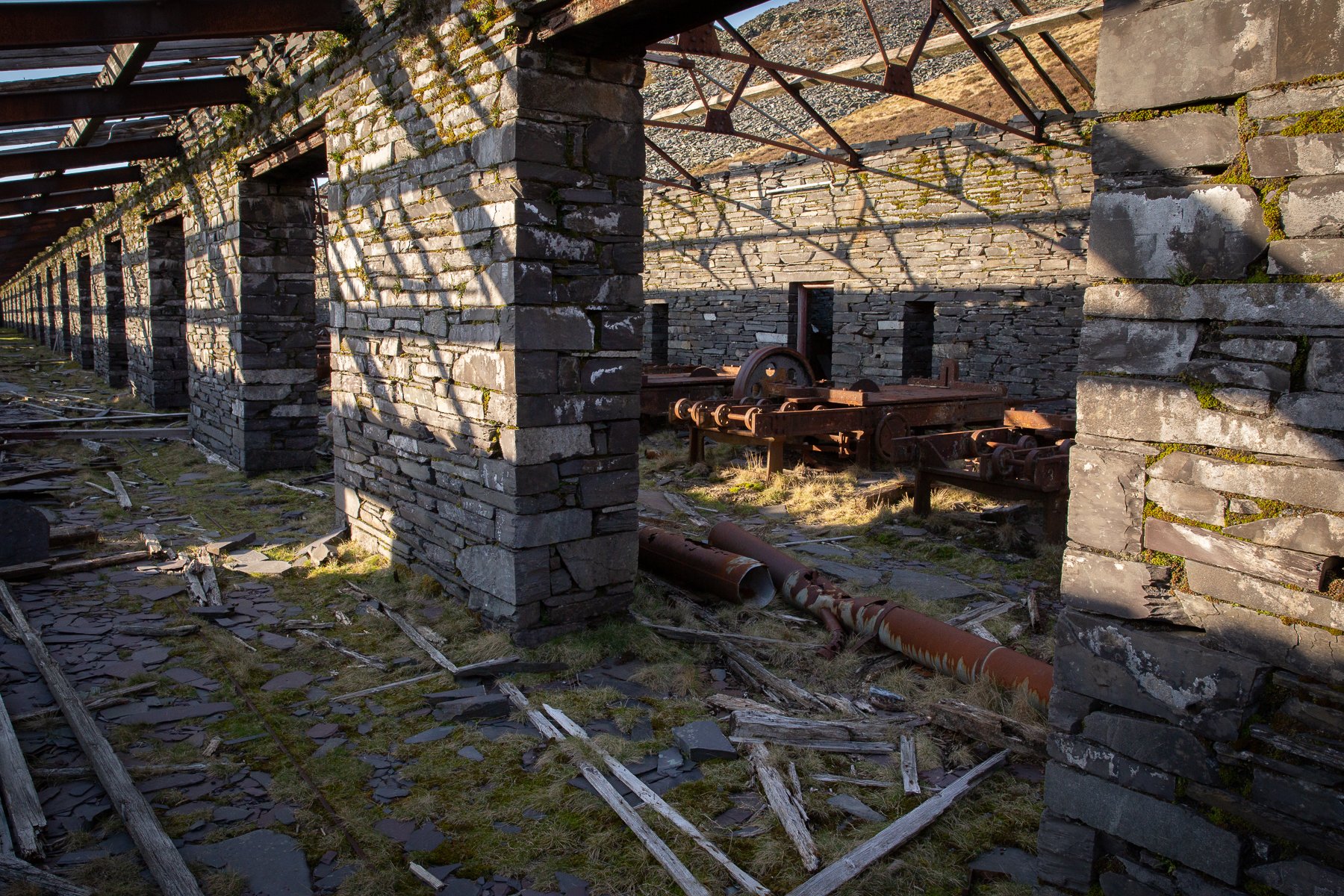
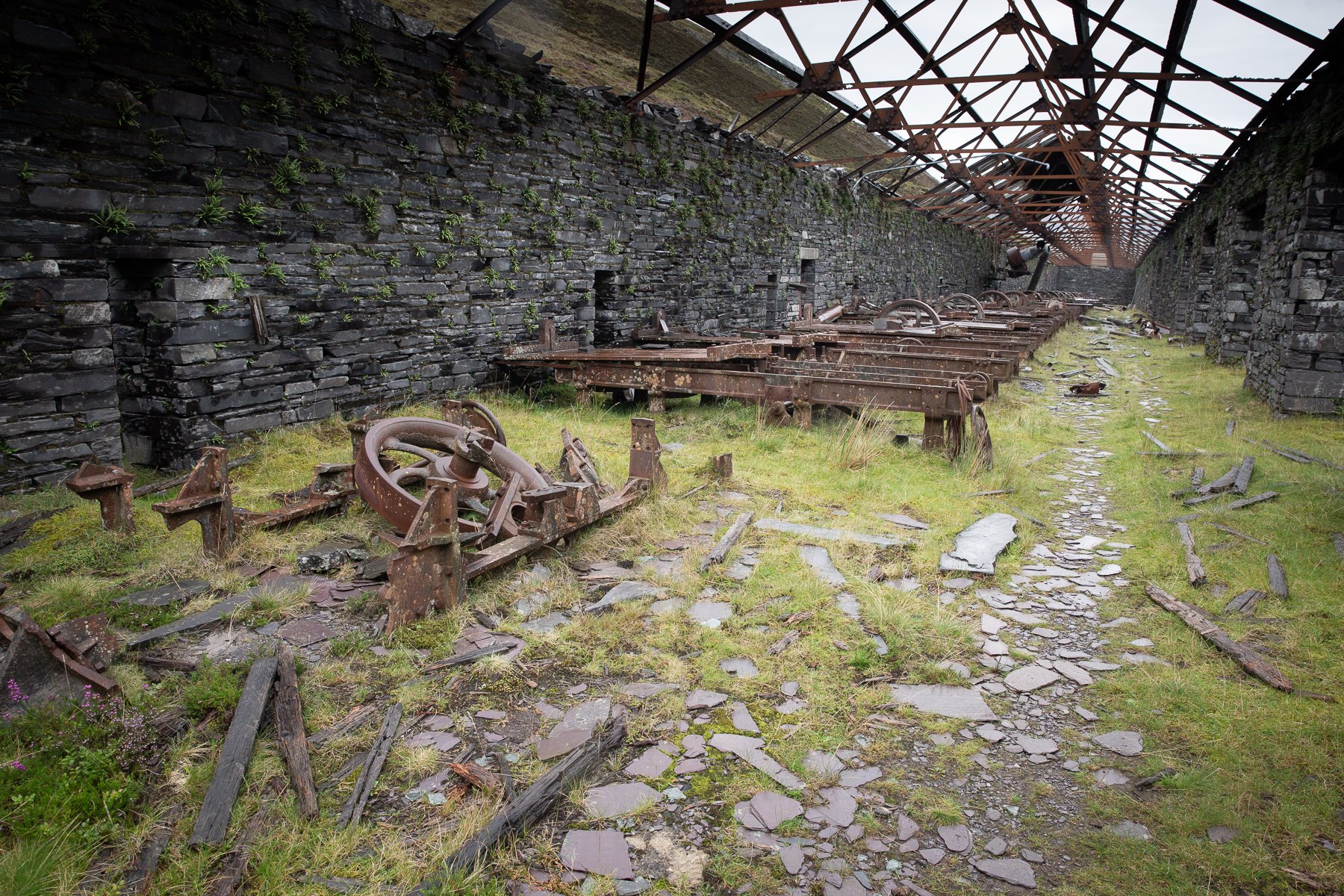
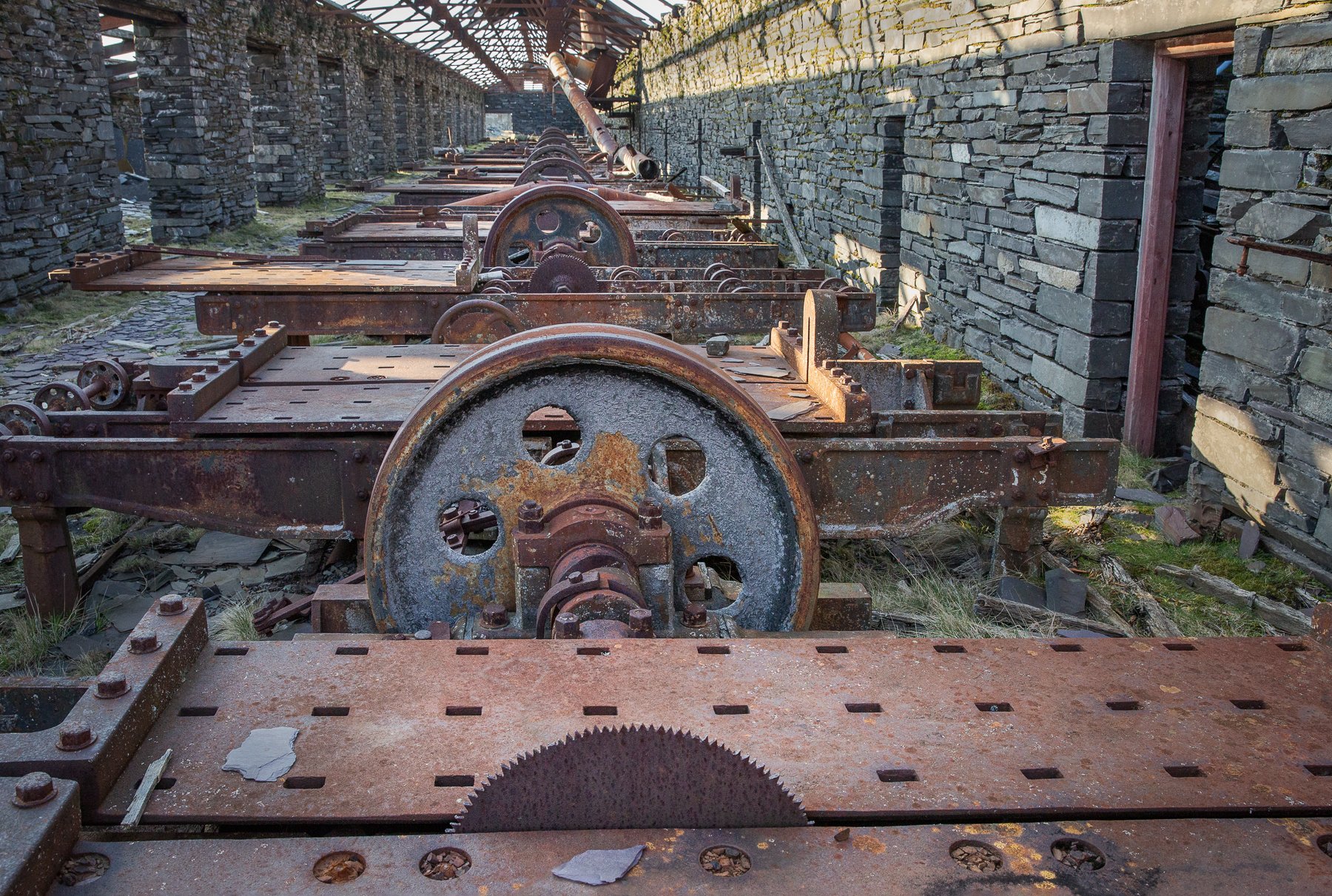
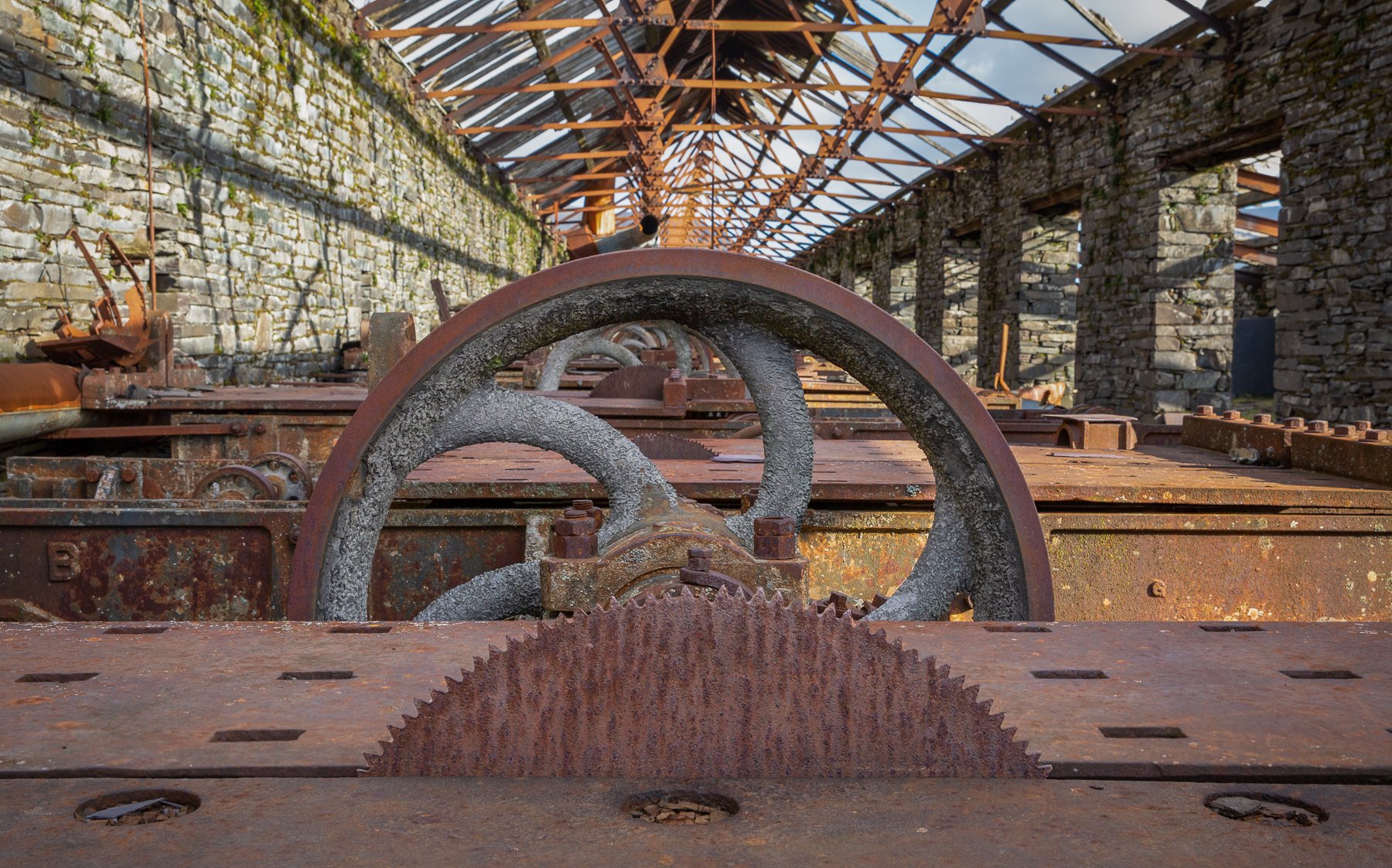
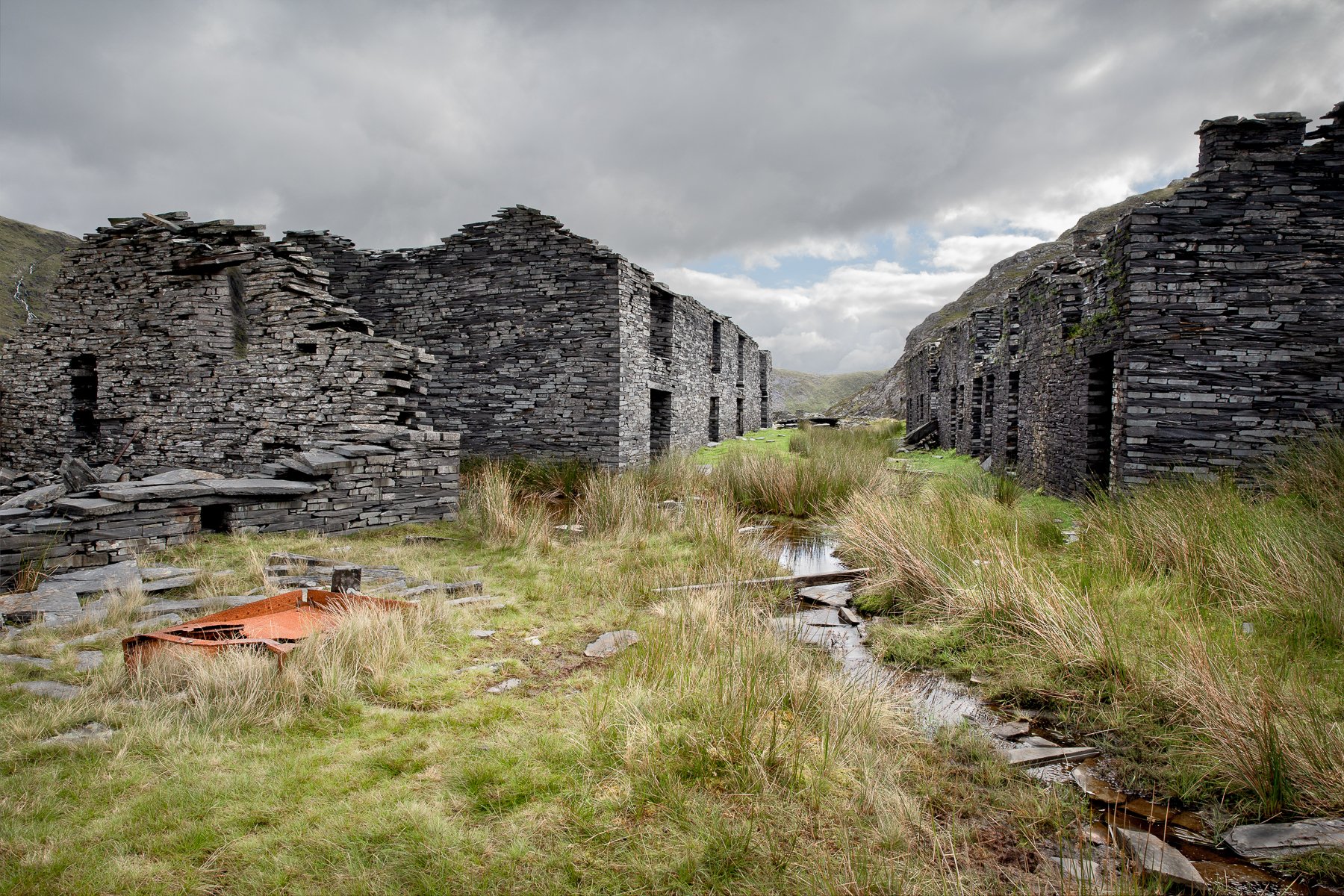
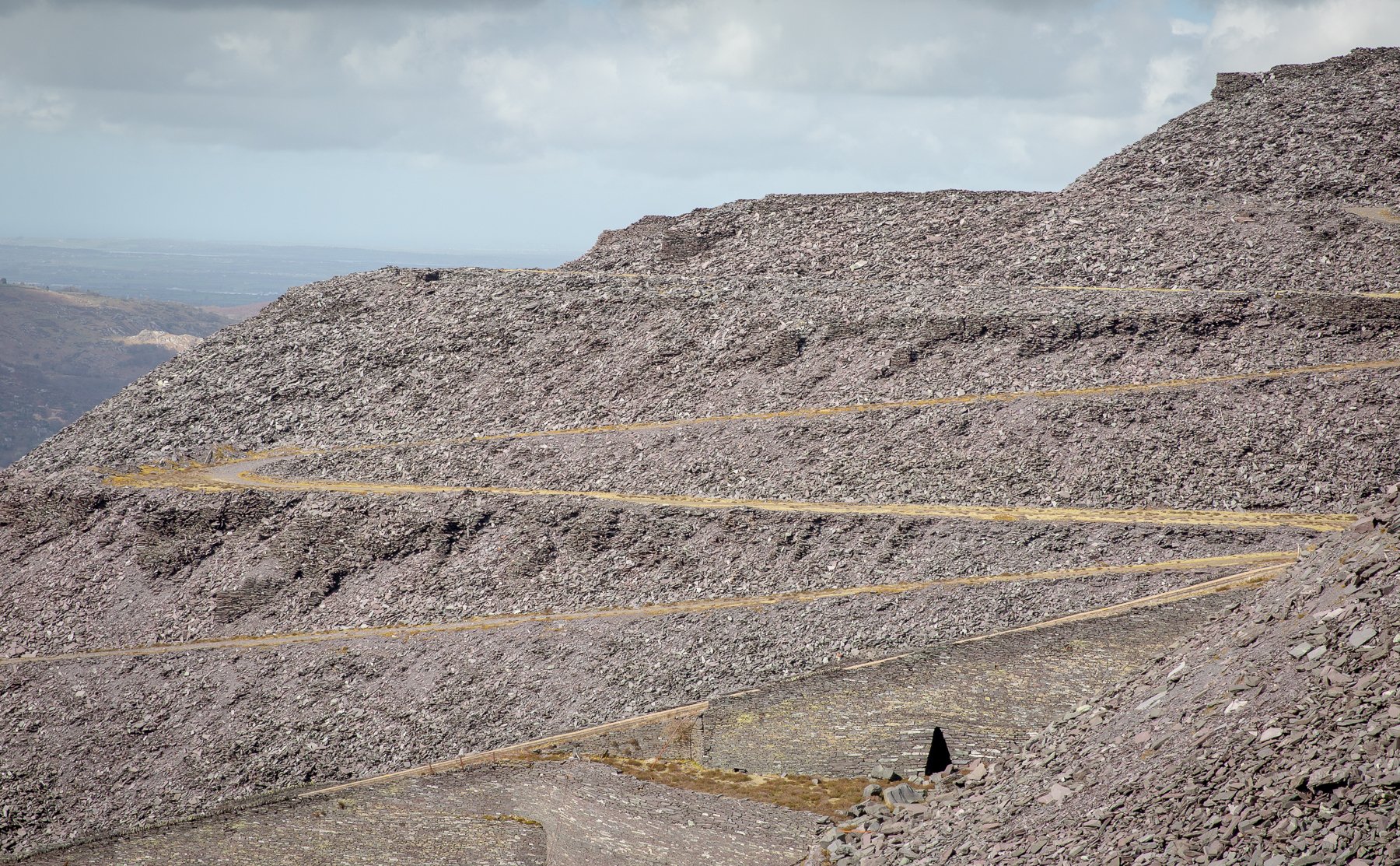
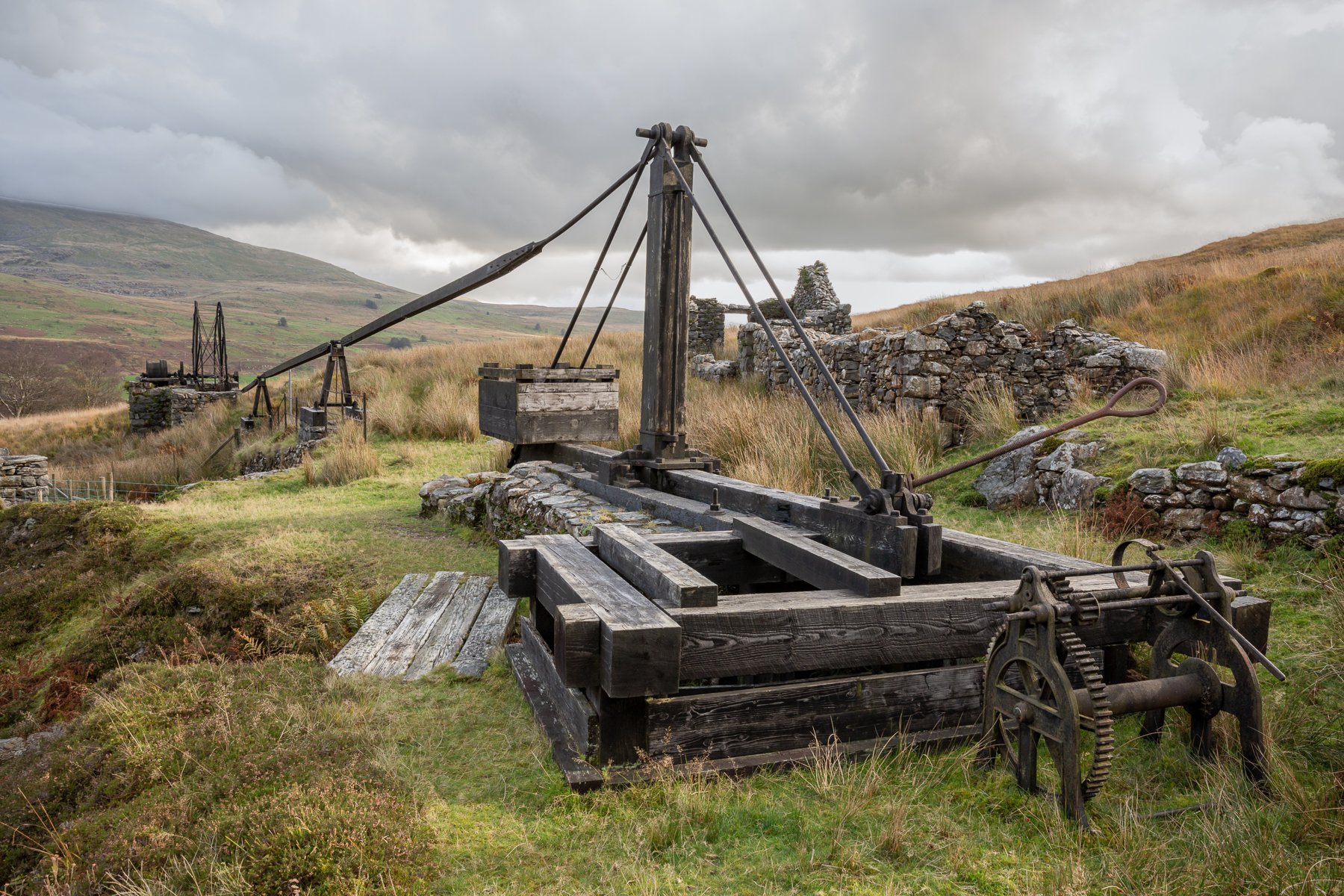
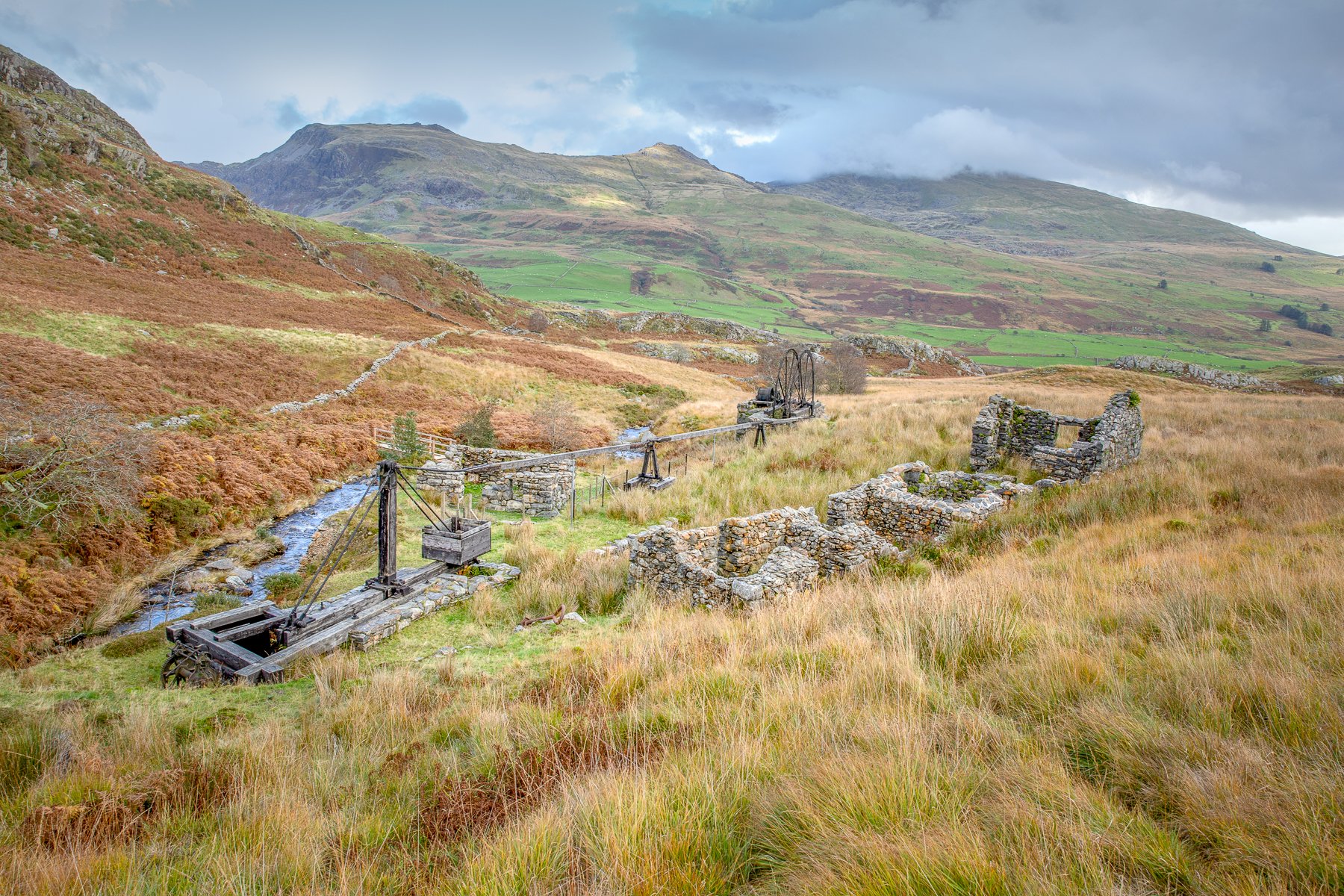
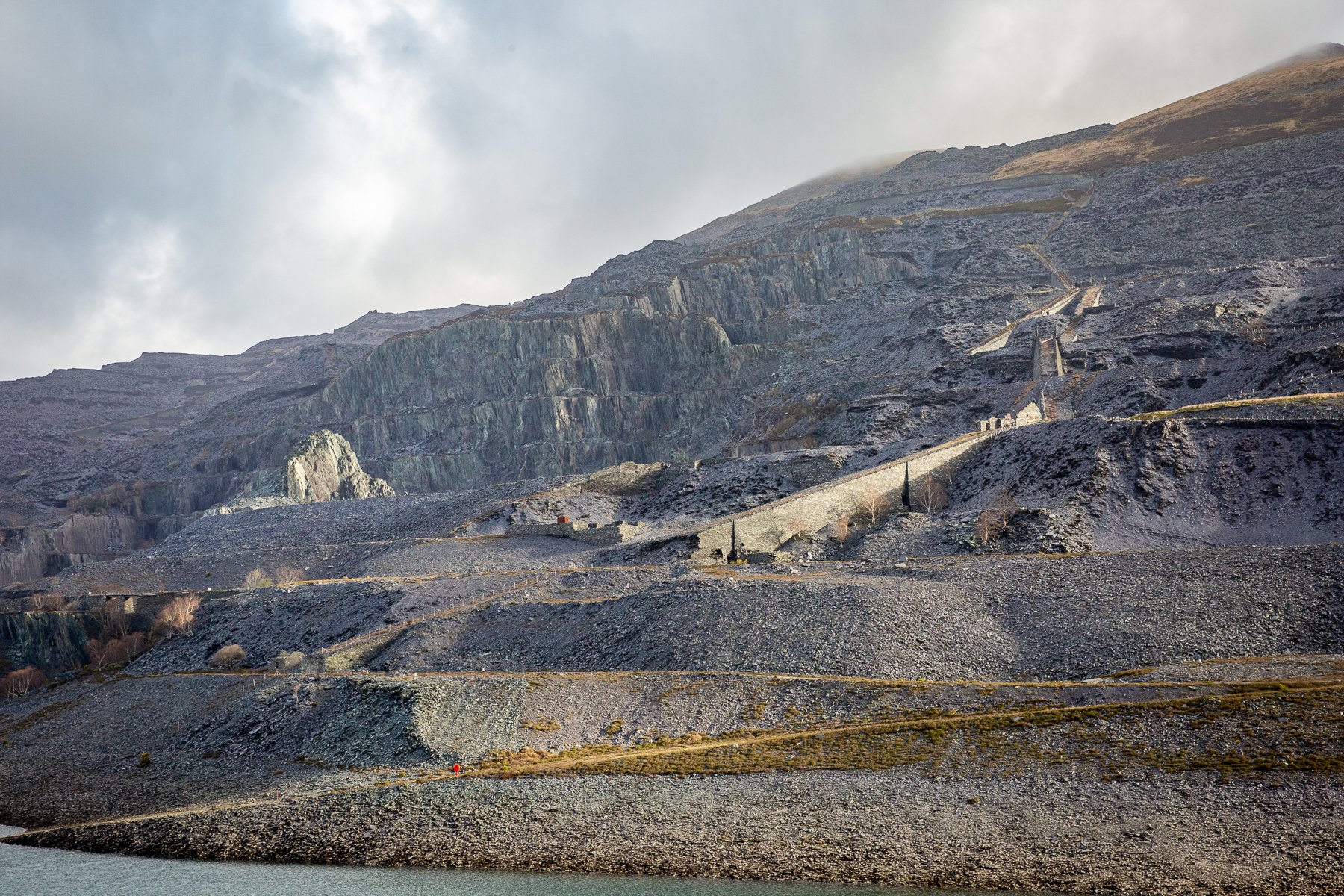
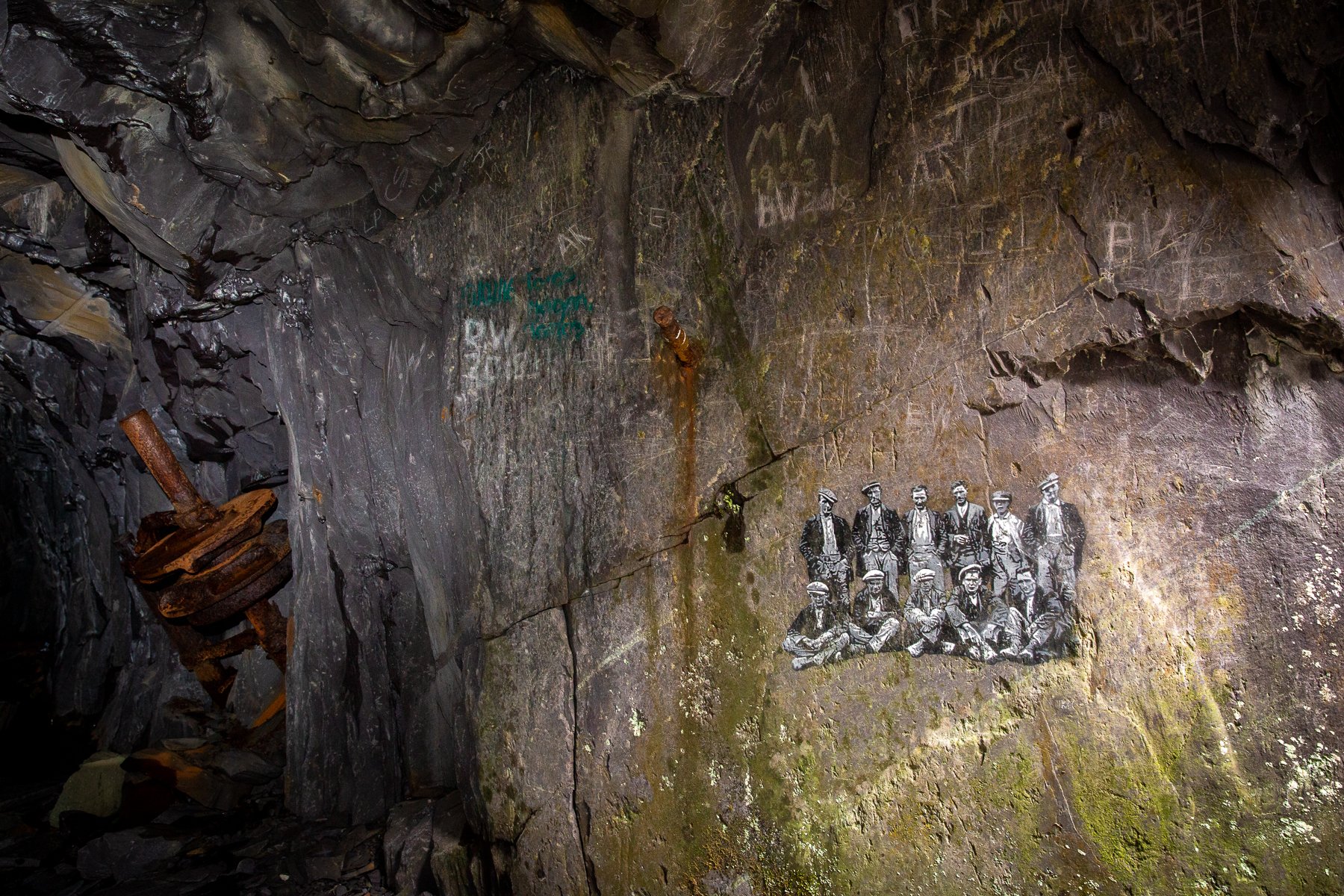
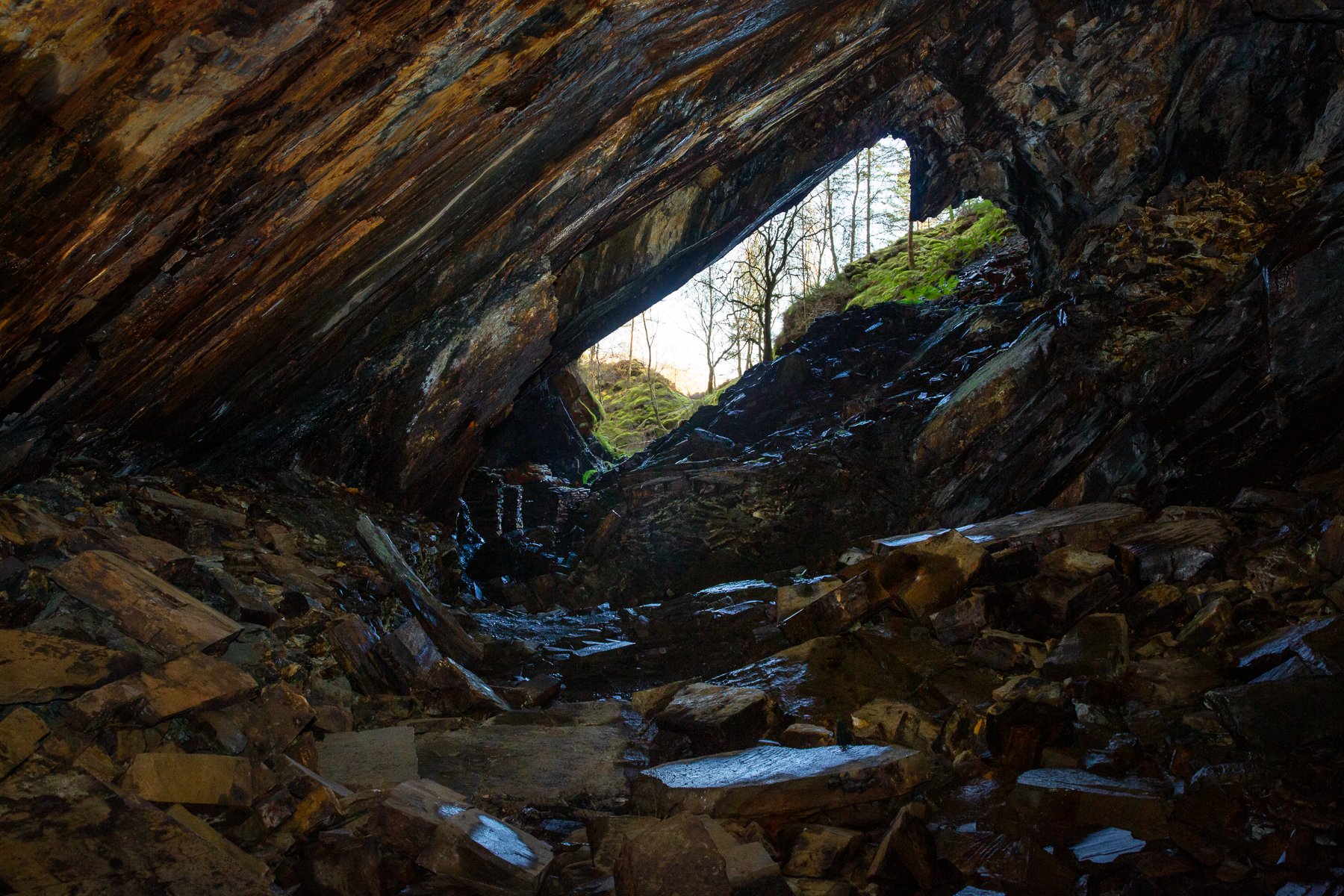
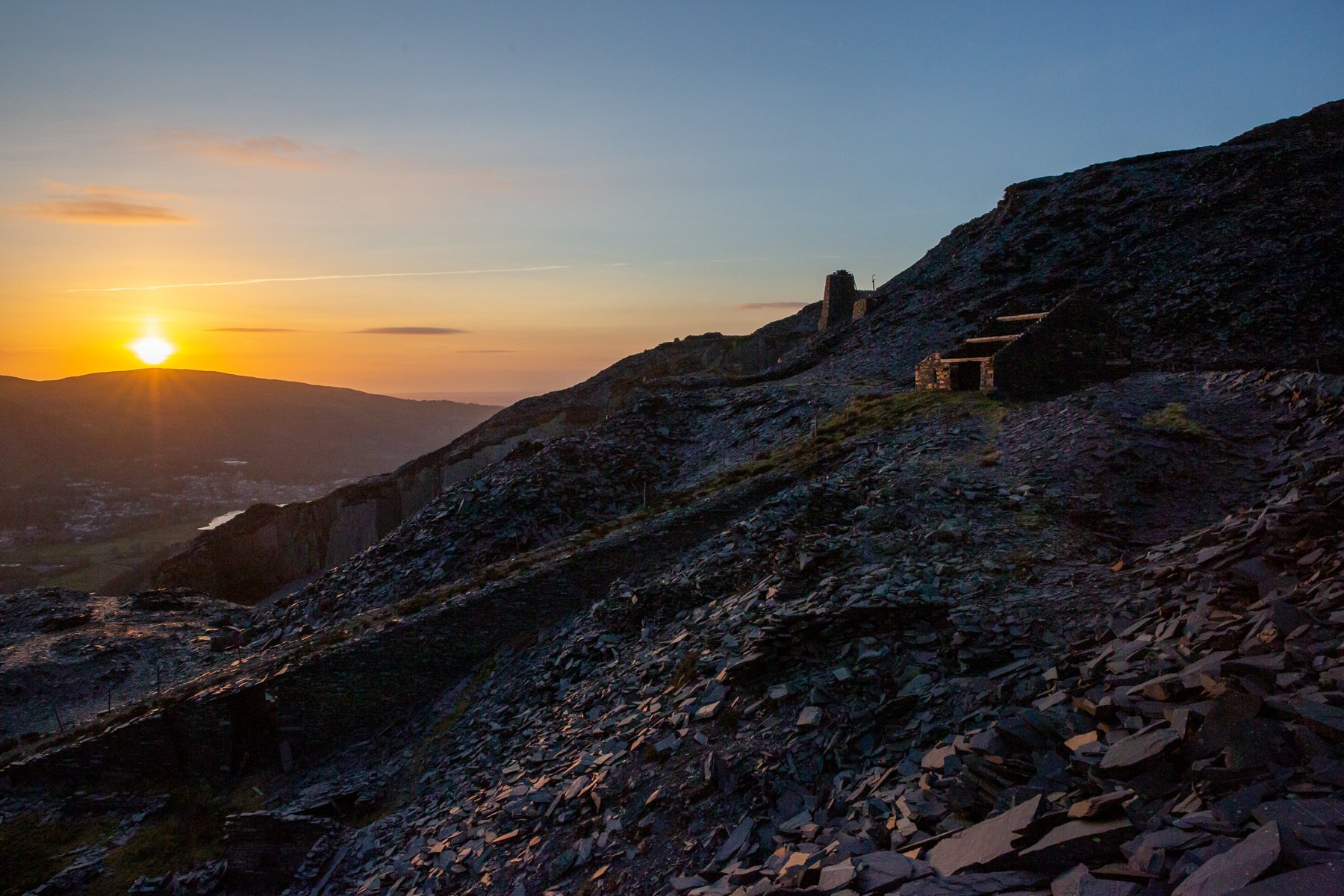
Slate Quarrying
I have enjoyed spending years exploring the different mines, tunnels and quarries of North Wales with some dating back to the Roman times. In feudal times a local could pay a fee of 20 shillings to mine or quarry slate. By the 19th Century with the 'Enclosure Acts' and the industrial revolution land owners realised the need for the slate and went onto make their fortunes.
Quarrymen worked six days a week for very poor wages and in sometimes desperate conditions. A boy would start as a rybelwr (assistant) then serve as a journeyman for a five year apprenticeship before coming a miner. The skilled quarrymen were paid piece-rates and at the start of every month each crew would agree a “A bargen” (a piece of rock six metres square) This negotiation was a monthly contract with the management dependant on the assessed ease or difficulty of extracting slates.
The quarrymen proper, who were considered the elite, made up 50 per cent of the workforce. They organized themselves into crews consisting of two rockmen who worked the rock face dangling on ropes, with gunpowder and bars to produce blocks of slate for the two other men to split and dress. Slate was cut into different sizes all which had names like Prince, Queen, Princess, Duchess, Marchioness, Countess, Viscountess, etc with a prince costing 4p. With upto 90 per cent of what was quarried ending as waste, the other 45 per cent of the workforce were used as bad-rockmen who kept the galleries clear of waste rock and the waste men who dumped the rock onto the waste heaps.
There would be deductions from the weekly wage eg: 8d (3½p) for gunpowder, or for fuses, candles, food, rent, tools, tool sharpening and even air for the pneumatic drills. In 1828 a quarryman on average earned 1/8 (8.5p) per day - compared with a farm workers 8d (3½p) to 1/- (5p) both were below the living wage.
Dinorwic Slate Quarry (made up of 16 smaller quarrys)was the second largest in the world. It was in operation from the 1770s, to 1969 and employed more than 3000 men at its height, positioning Wales at the forefront of the global slate industry throughout the 19th century. The site covers 700 acres (283 ha) split into two sides (Braich and Garreth) with twenty galleries each and ascends upto 2300ft (701m). All of the quarry galleries were named, after countries, people (both local and nationally famous) and contemporary events (Australia, Albion, Bonc Fawr, Egypt) . Extensive internal tramway systems connected the quarries using inclines to transport slate between galleries. Even though the quarry closed in 1969, today it remains vital to Wales’ cultural identity and was designated with UNESCO World Heritage Site status in July 2021.